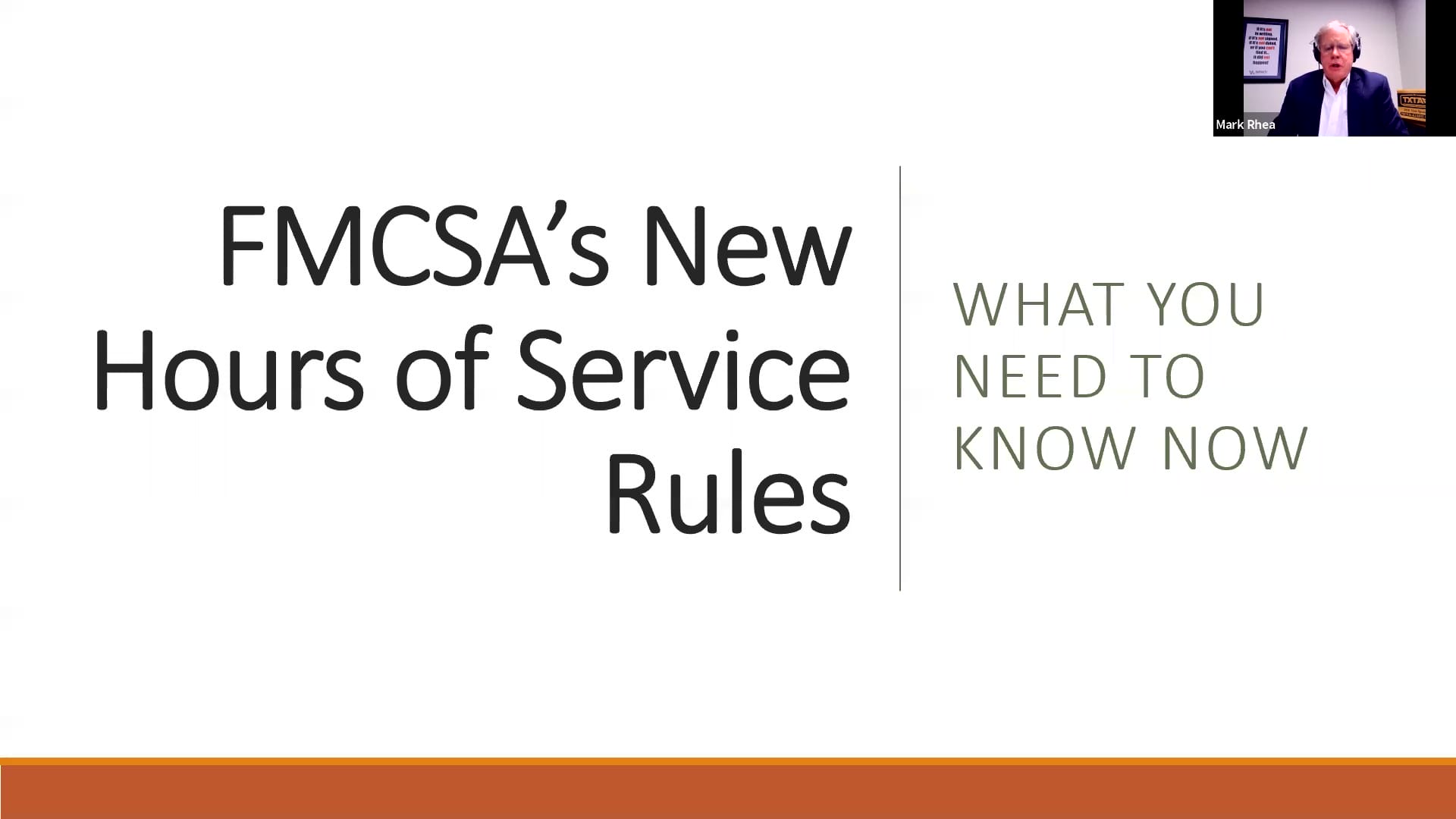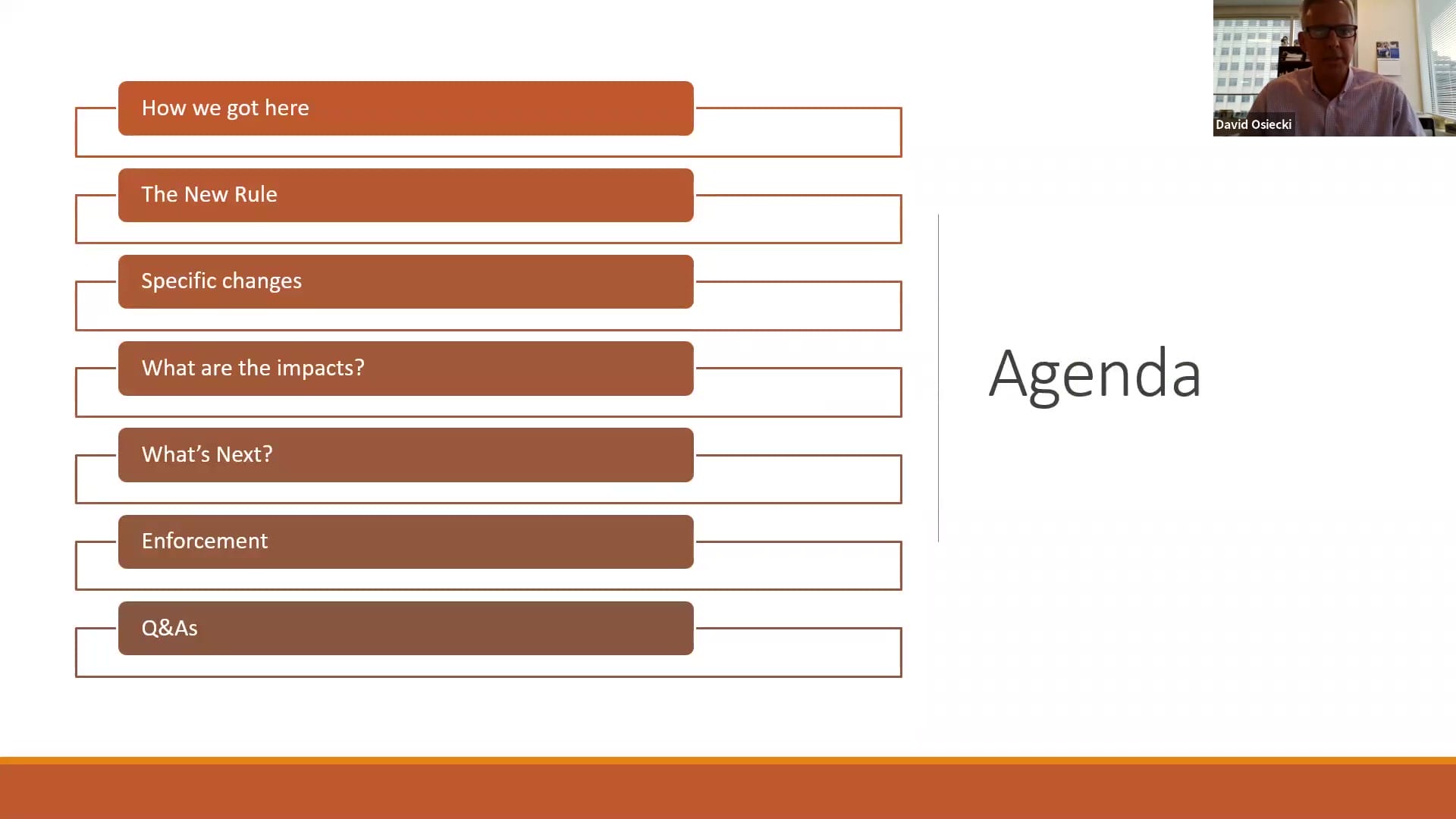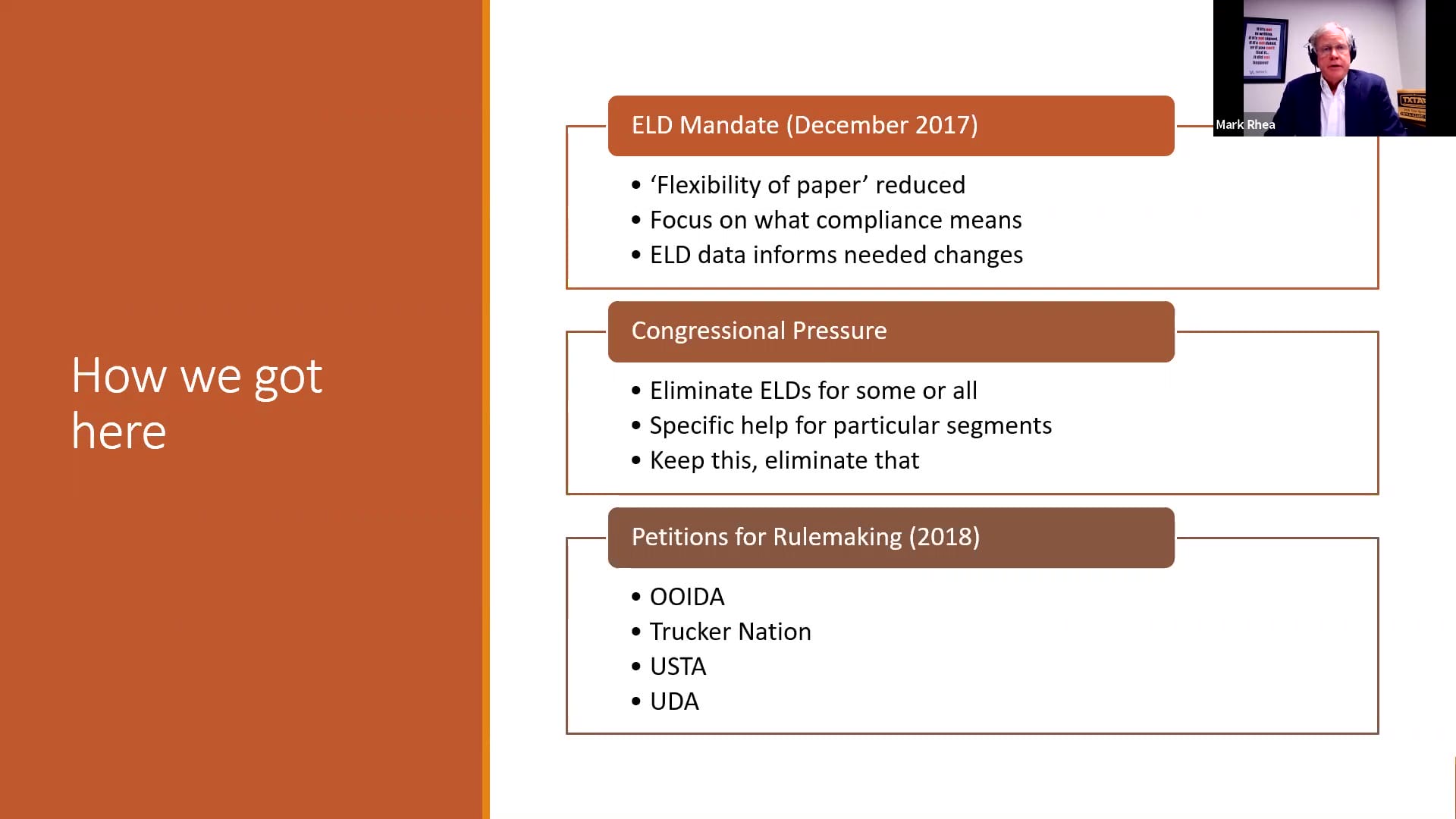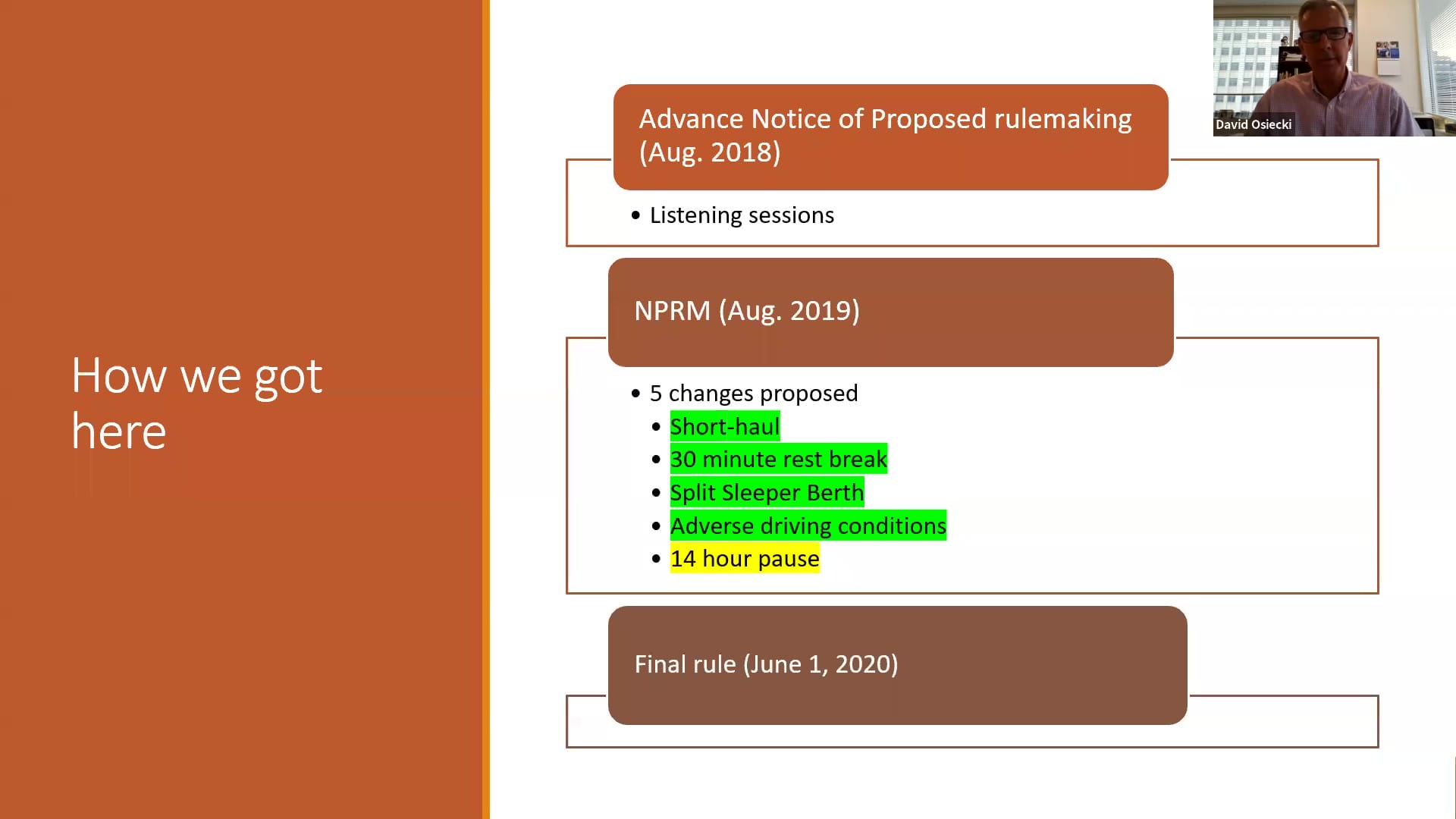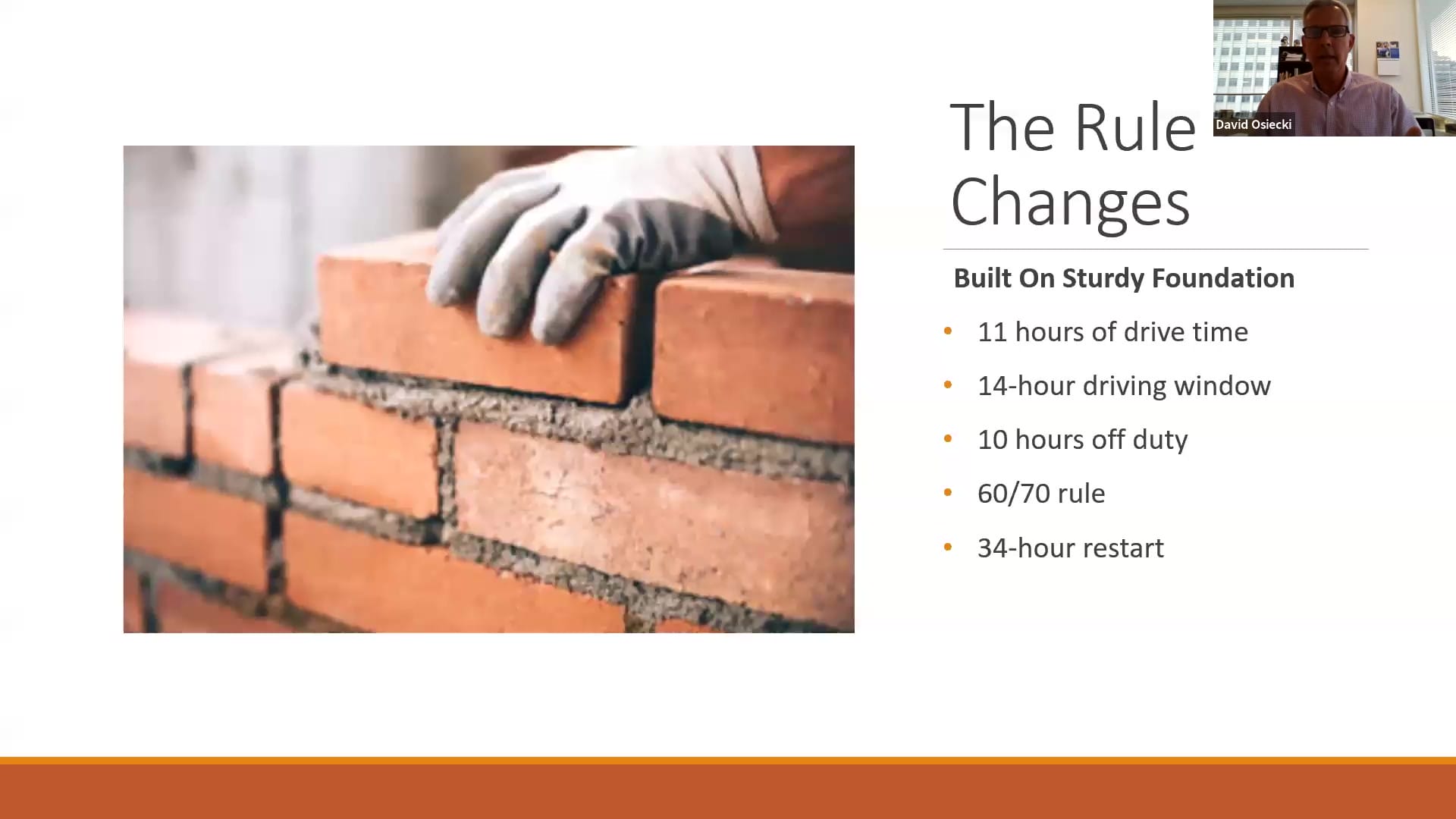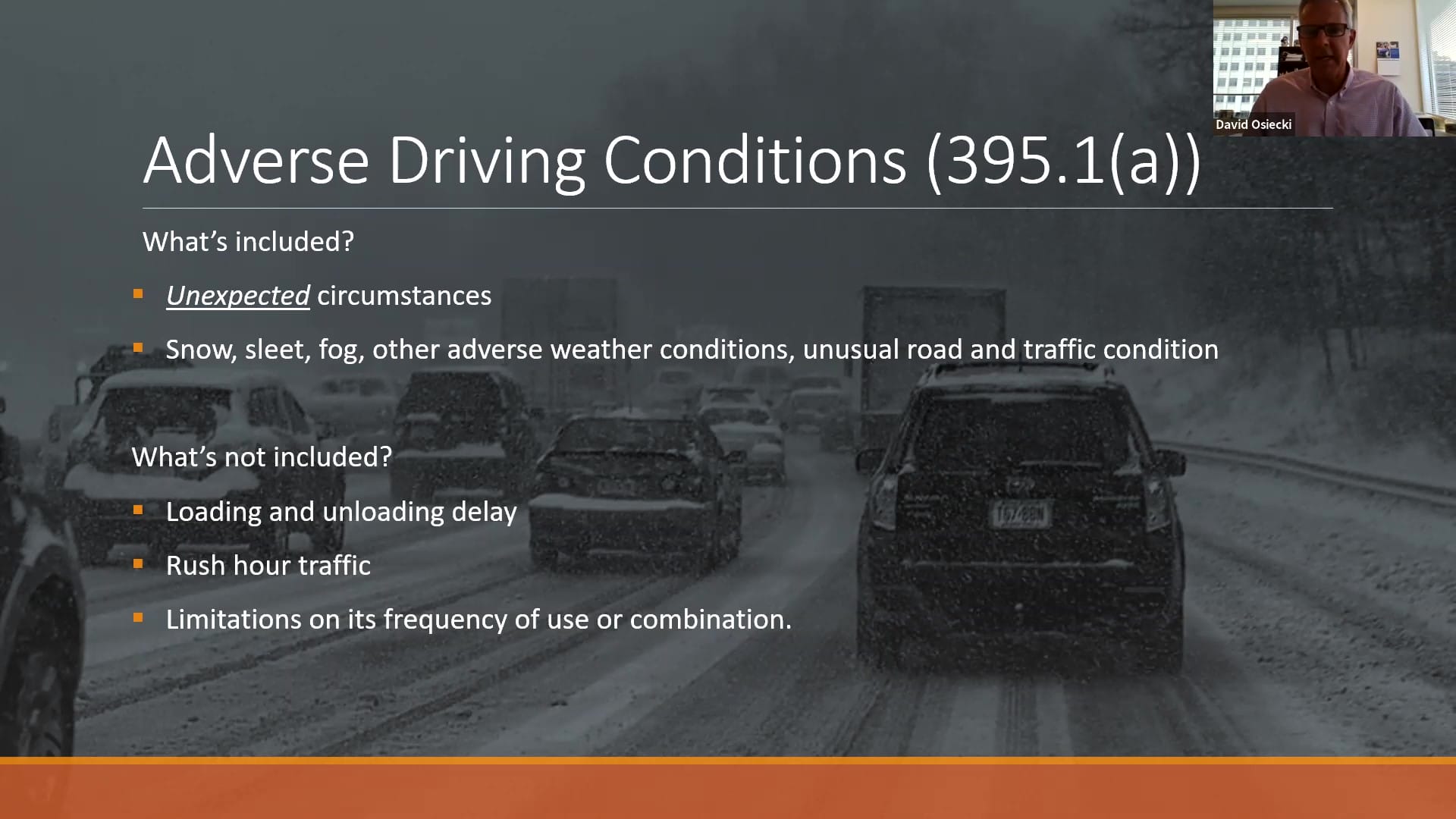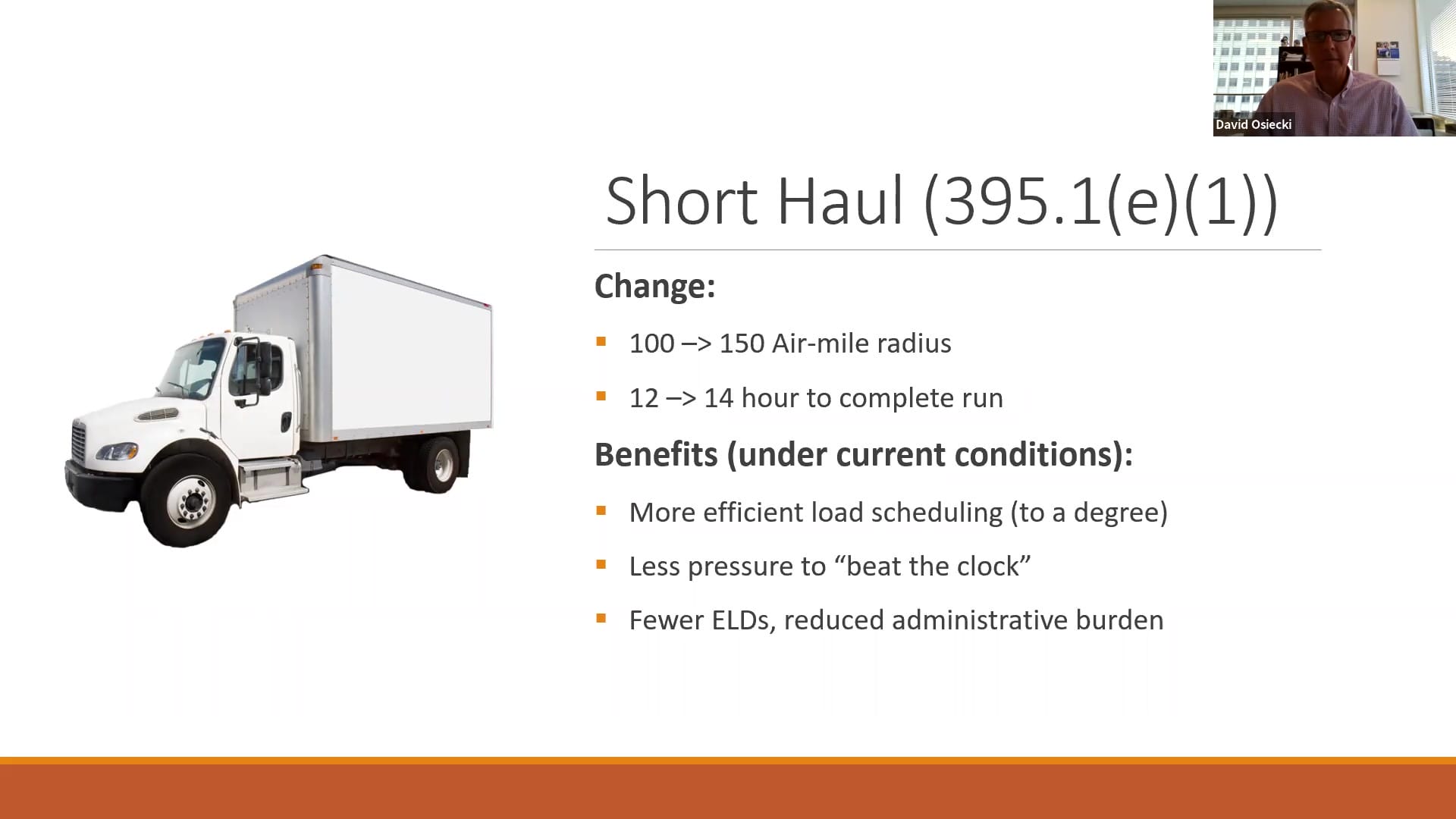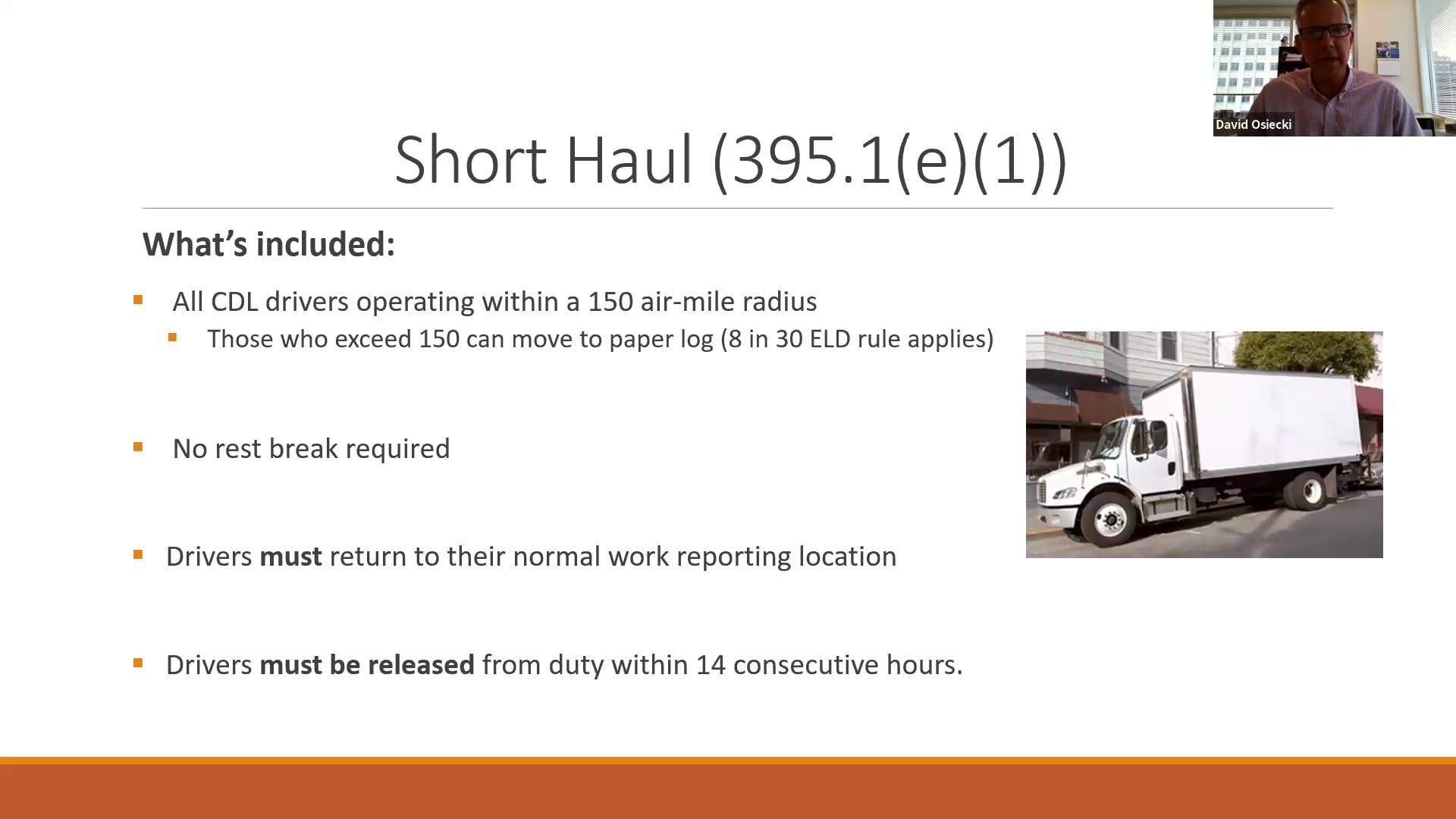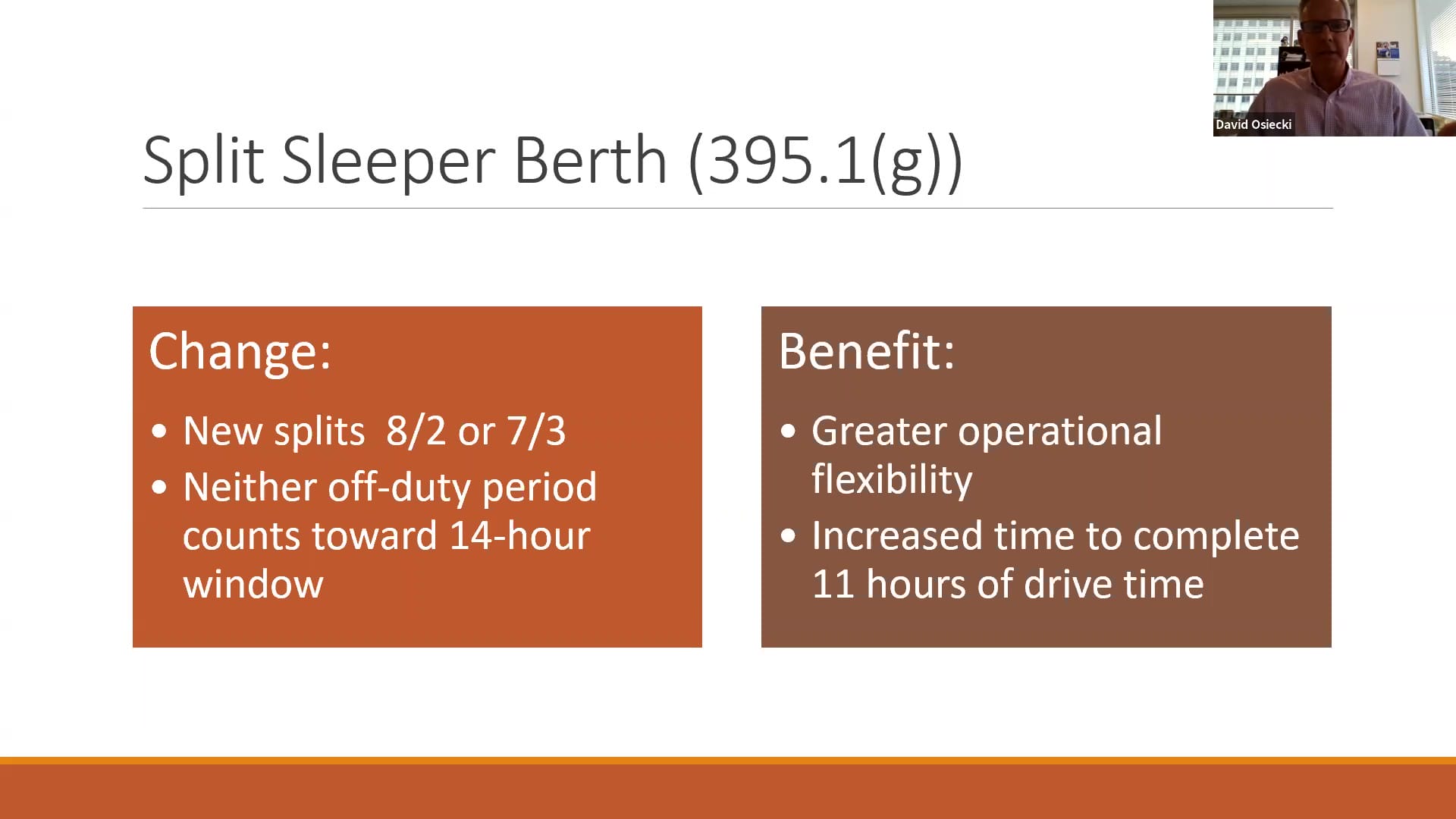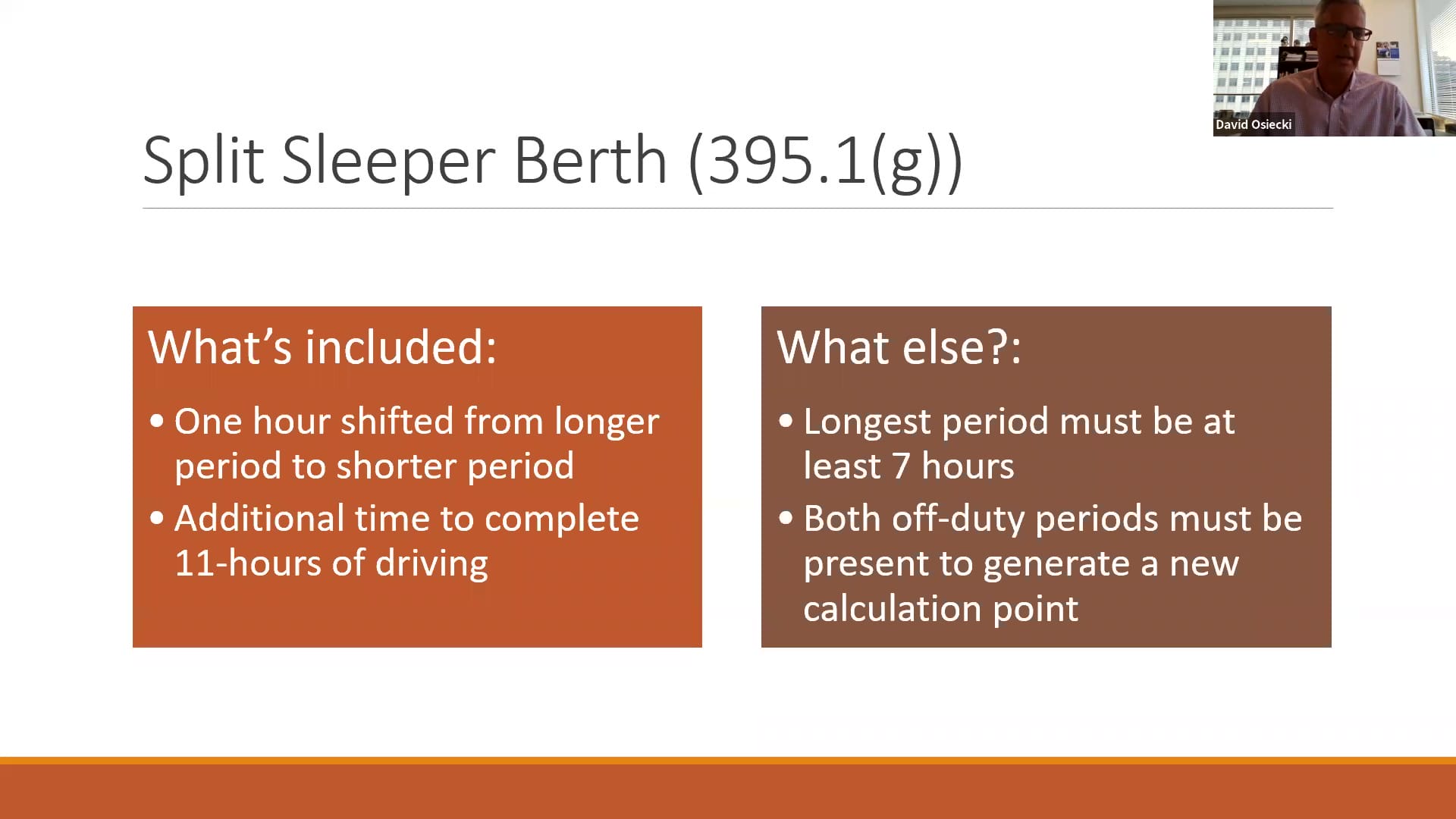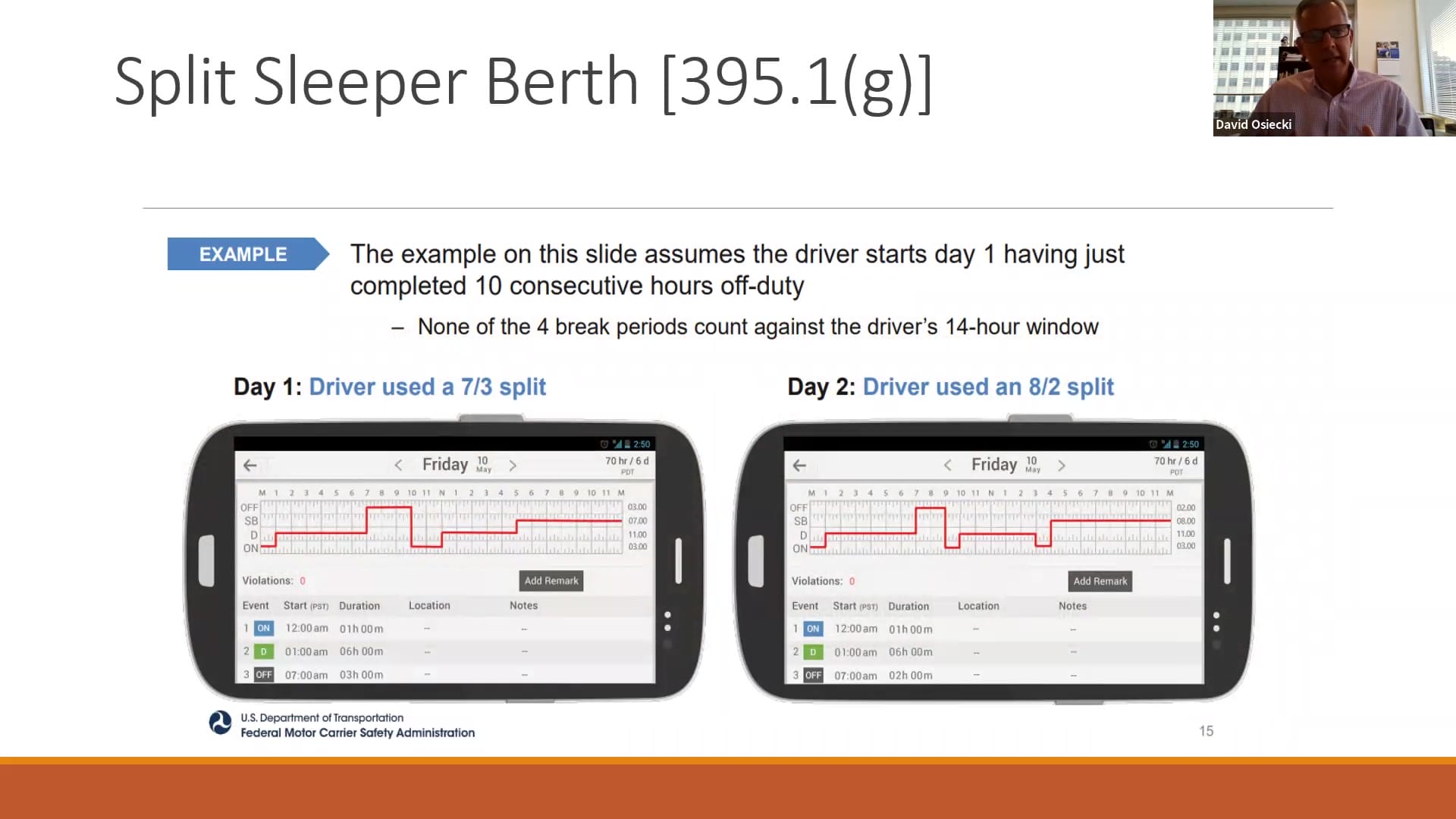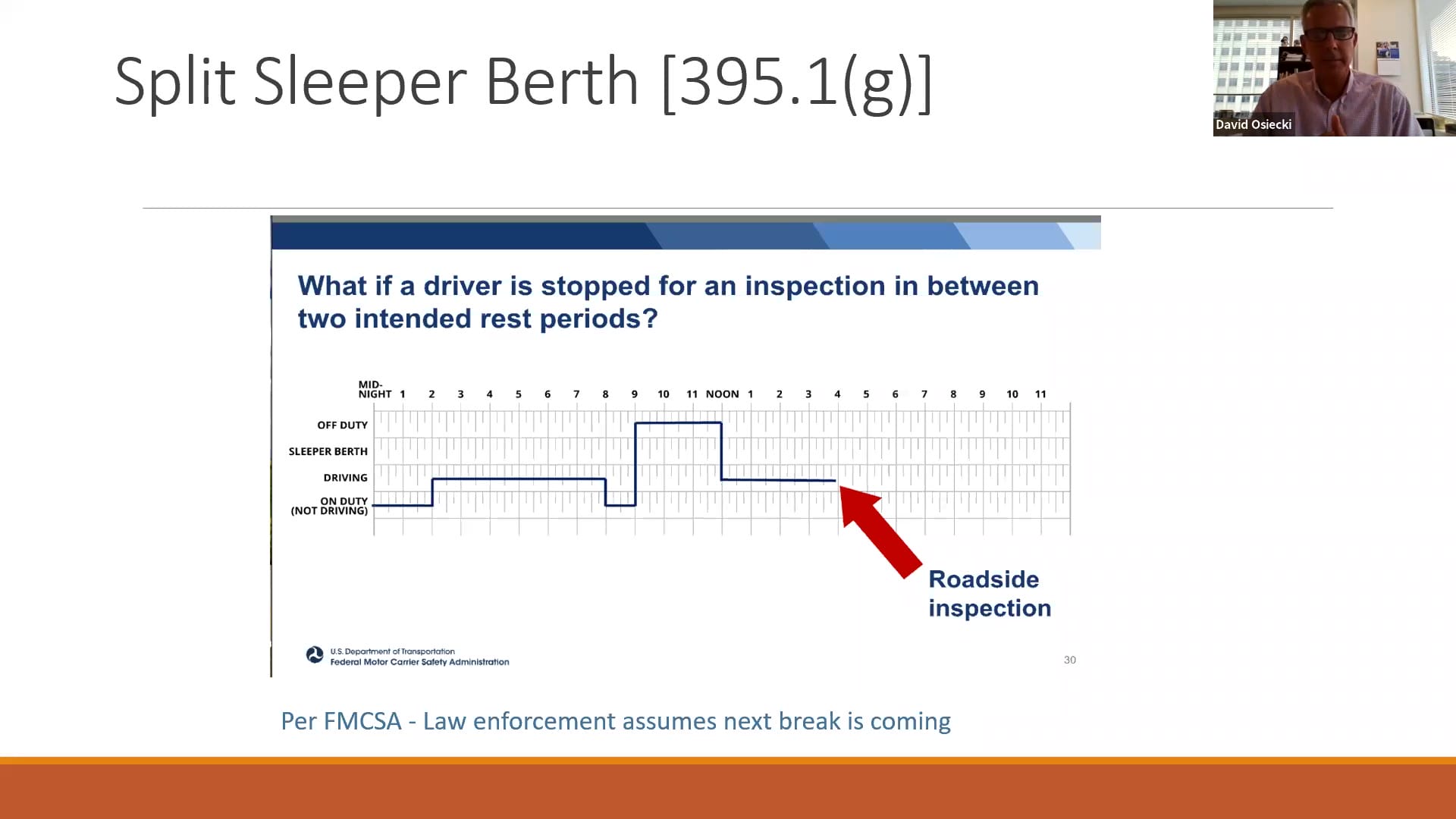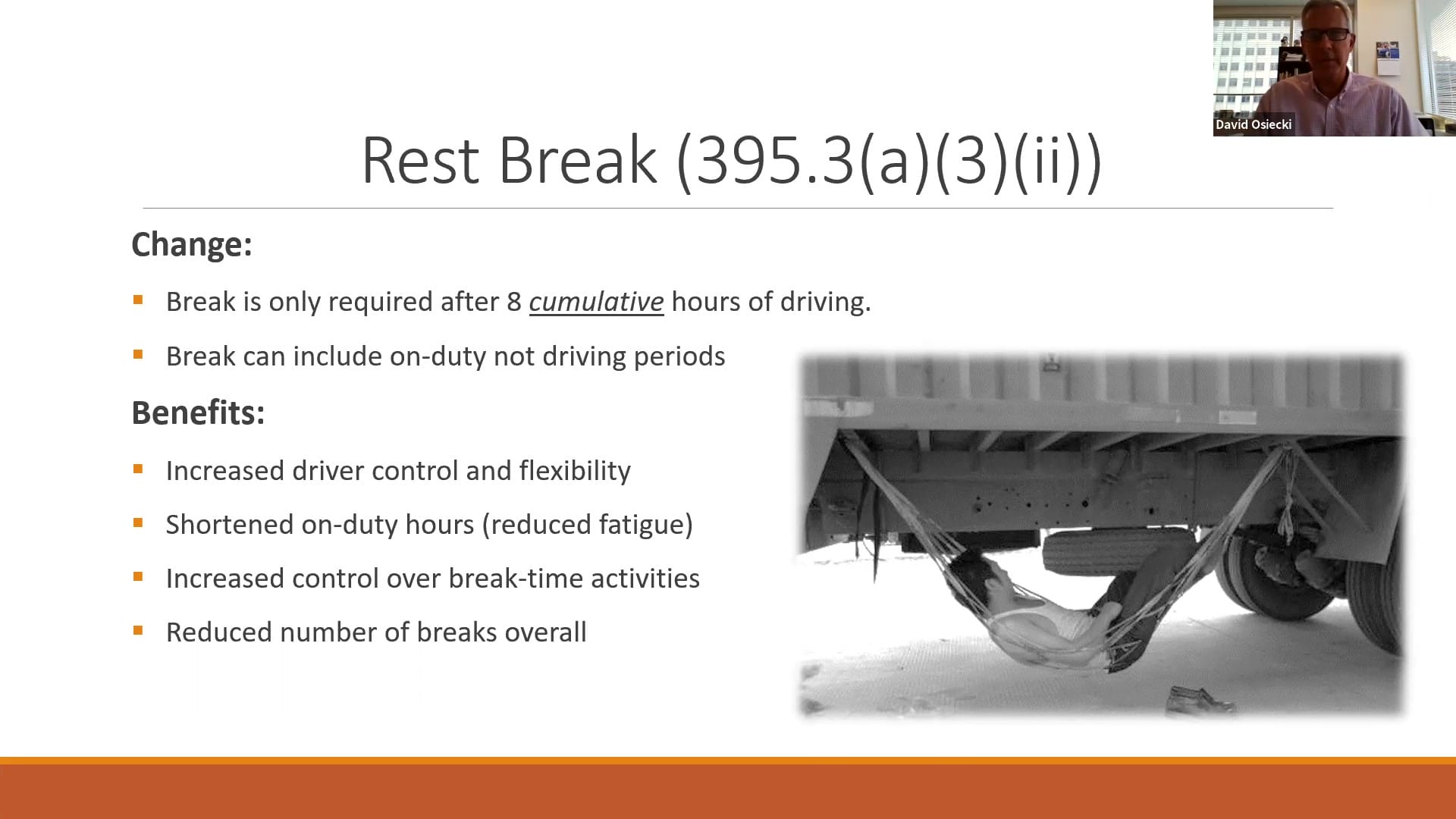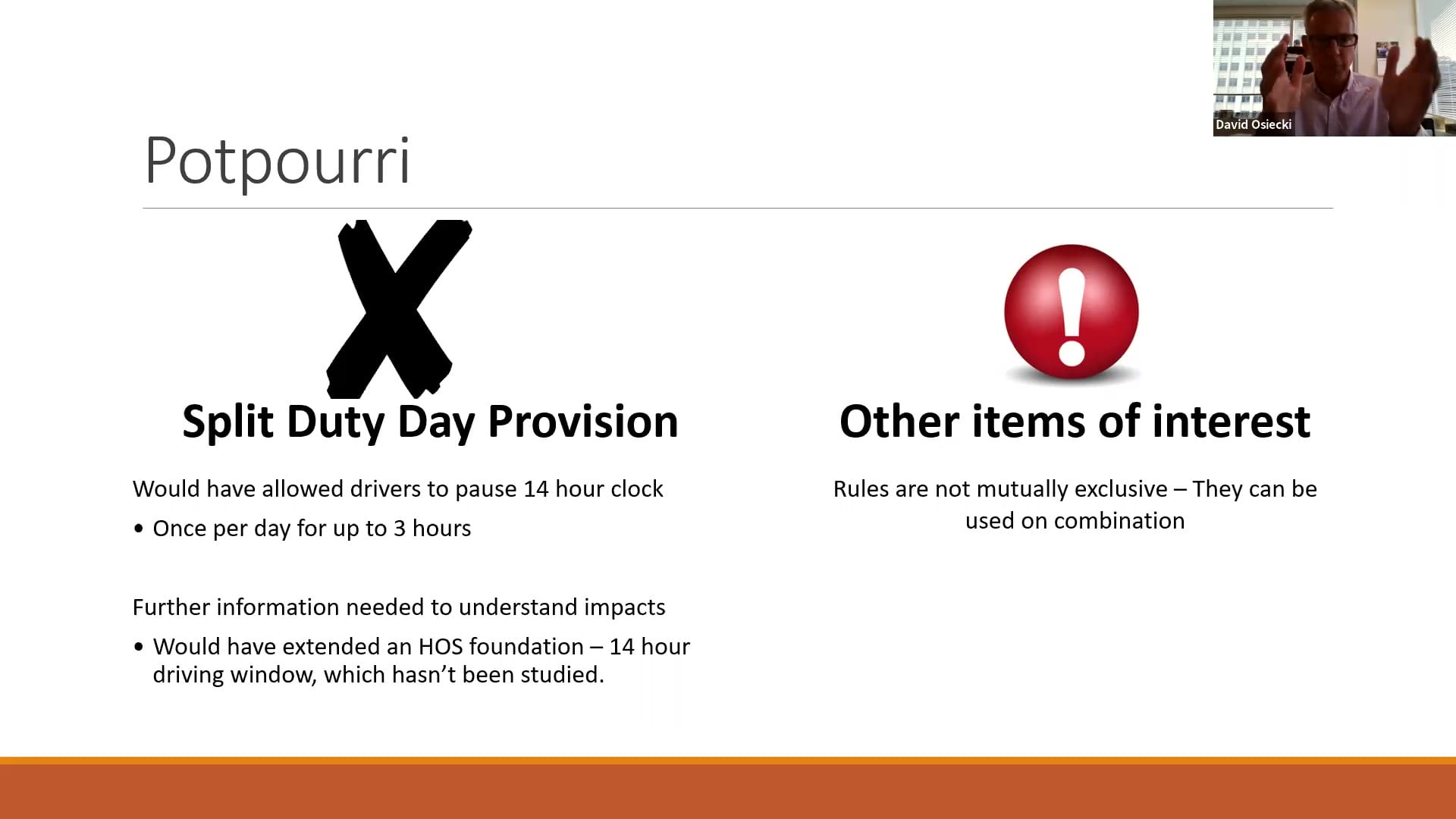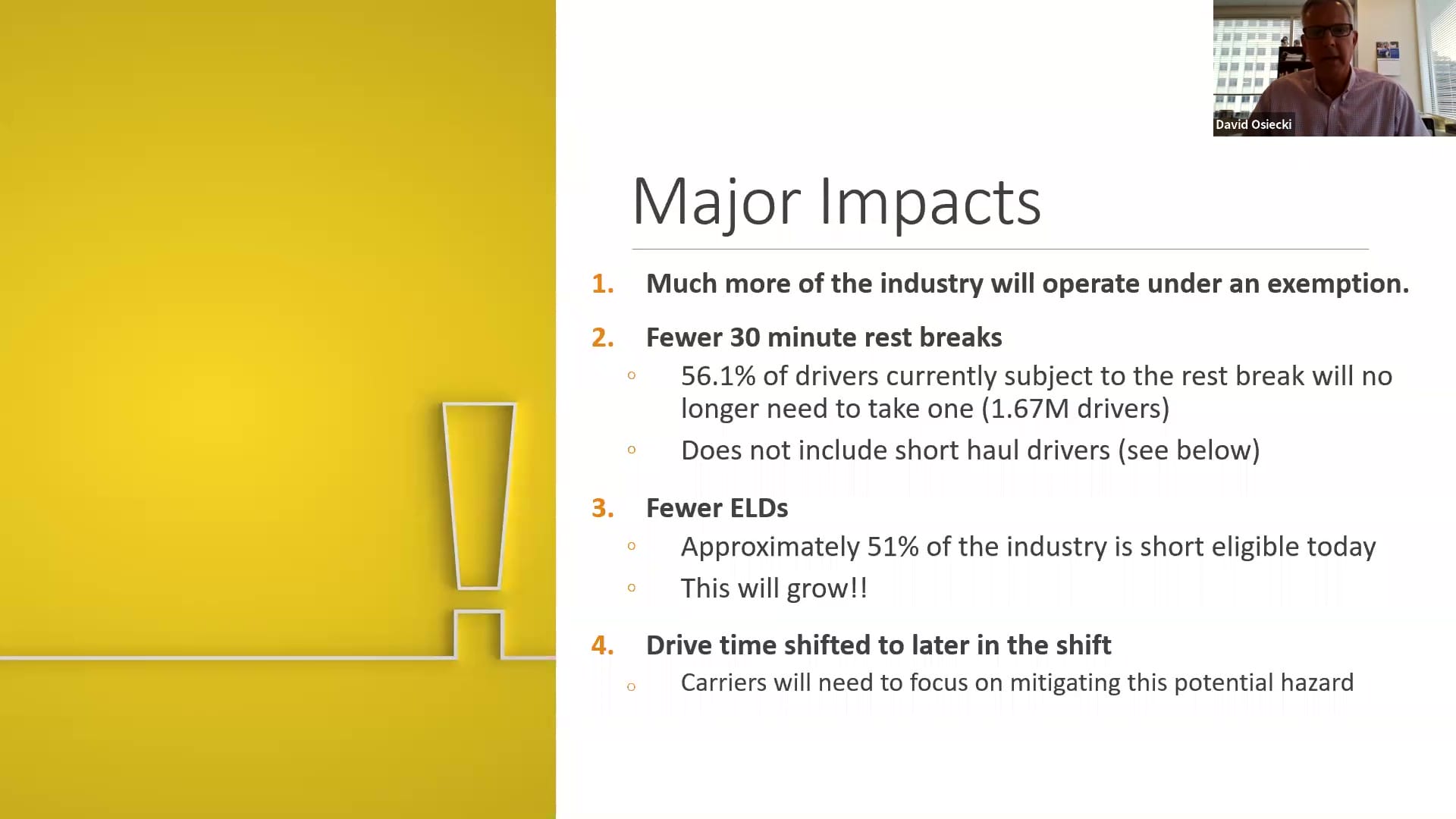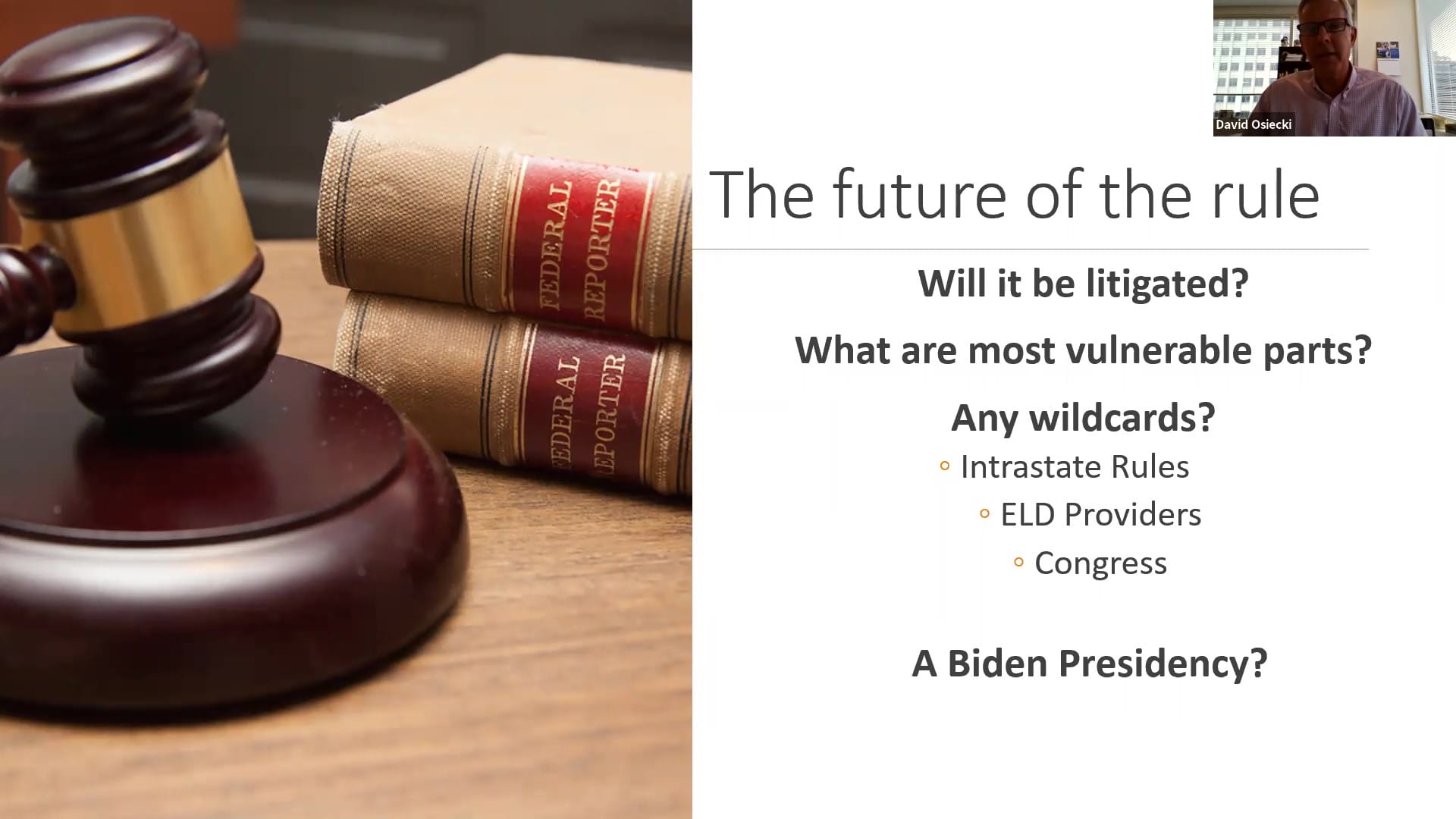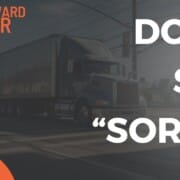Transcription
1
00:00:27.210 –> 00:00:37.740
Good morning, everybody. Jay Wommack, founder, and CEO of Infinit-I Workforce Solutions. Thank you so much for joining us today. Our webinar begins in just a few minutes appreciate y’all sitting on hold.
2
00:00:38.280 –> 00:00:43.560
While we’re here, waiting for everybody to jump on, I want to give a special shout out to our existing clients that are here with us today.
3
00:00:44.040 –> 00:00:50.790
You are proven to your entire workforce that safety is your number one concern is your number one priority. And we appreciate that because
4
00:00:51.090 –> 00:01:03.540
We’re very, very good at delivering training for safety, orientation, for ongoing corrective action, and you obviously have taken the jump into the company right now and you’re using it, you’re saying that your
5
00:01:04.140 –> 00:01:09.840
people are valuable to you. And that’s exactly what we want. That’s what you want. That’s what you people want to hear. So
6
00:01:10.350 –> 00:01:18.390
we do have all the answers. We know exactly what we’re doing web-based training, we’re doing this for 15 years but I have a special offer today for our prospects that show up.
7
00:01:18.990 –> 00:01:30.960
We’d like to offer you a 30-day free trial using our system completely. See what it’s all about see if you like using something like this, you know, remote training is jump to the forefront
8
00:01:31.410 –> 00:01:41.940
of the world and the last 90 days, the world has shifted has changed. Remote training, we’re the experts we know more about remote training them virtually anybody in the entire I guess world, universe.
9
00:01:42.600 –> 00:01:49.350
So I want to offer the 30-day free trial, time offers limited, we can’t make this go on forever, I wish we could.
10
00:01:50.400 –> 00:02:00.360
I am going to go ahead and throw in some CSR reps. Someone who a client service rep that can make this thing hum for you, get user activity up on system because that’s the key. Get your people to use the system.
11
00:02:00.990 –> 00:02:09.030
I don’t care how many bells and whistles; you’ve got if they’re not going to use it. It’s not going to have an impact on your company. And at the end of the day, that’s what we’re all about.
12
00:02:09.480 –> 00:02:19.110
We want to see your top line and bottom line, improve. We want to see your safety record improved. That’s what we do, and we do that better than anybody out there.
13
00:02:19.860 –> 00:02:26.610
Thanks for sticking with me. In the meantime, it’s what you came for us the webinar. So, Mark, if you’re ready, I’m will hand it over to you.
14
00:02:29.760 –> 00:02:37.650
Mark Rhea: Well, thank you very much, Jay. And welcome, everyone, to our September 17th webinar on Hours of Service (HOS).
15
00:02:38.880 –> 00:02:47.580
Mark Rhea: Before we get too deep into this, I want to make sure that we get a free trial offer if it’s up on the poll there.
16
00:02:48.180 –> 00:03:02.010
Mark Rhea: Jay, I can certainly attest is made a career out of his support to our trucking industry and his 30-day trial offer if you don’t have content out there.
17
00:03:02.460 –> 00:03:11.580
Mark Rhea: To your drivers today, tomorrow is the day to do that we’ve had. We are number one in the industry and remote learning. We’ve had 180,000
18
00:03:12.720 –> 00:03:25.530
Mark Rhea: assignments in the last couple of months on the 10-part content on Hours of Service. So please if you there’s needs to be a sense of urgency. If you haven’t, if you have
19
00:03:26.220 –> 00:03:41.370
Mark Rhea: you’re certainly welcome to do another one to make sure your drivers are up on that we’ve got an expert. Today joining us in the field of pioneering, if you will, in the hours of service and regulatory world of our industry.
20
00:03:42.420 –> 00:03:51.120
Mark Rhea: Mr. Dave Osiecki excuse me, and he is works for the Scopelitis Transportation, and Consulting
21
00:03:51.900 –> 00:04:15.660
Mark Rhea: Please check the poll question. If you would like to participate in the free offer that Jay has offered again, we’ve only had 180,000 assignments so far, seeing the yes is pop in. So that’s a good thing. Keep them, keep them coming. We urge you to participate in this.
22
00:04:17.250 –> 00:04:26.730
Mark Rhea: The free trial includes access to the complete training library, but more specifically the hours-of-service content that we’ve developed.
23
00:04:27.240 –> 00:04:38.940
Mark Rhea: Fleet wide communication and we have Client Success rep standing by to help you out. So click yes and take Jay up on his offer.
24
00:04:39.540 –> 00:04:56.880
Mark Rhea: I see the numbers coming in. Looks impressive. So, we’ll give you another option at the end of the webinar to take Jay up on his 30 day trial offer and we will start, our formal presentation now with
25
00:04:58.440 –> 00:05:17.340
Mark Rhea: Hours of Service. So let me give you a quick background on David he, like I said, is a pioneer started his career 30 years ago with what’s known as The Office of Motor Carriers, but the federal highway Highway Administration, which of course is now Federal Motor Carrier Safety Administration.
26
00:05:18.480 –> 00:05:29.190
Mark Rhea: He moved from there to the American Trucking Association, the ATA, where he ended up with a 20 plus year career. They’re moving to the ranks of executive vice president
27
00:05:29.640 –> 00:05:46.980
Mark Rhea: And Chief of National advocacy, he’s represented our industry before state, federal, US Congress, national media, you name it. He has represented our industry very successfully and very professionally for years.
28
00:05:48.270 –> 00:05:54.300
Mark Rhea: So, without he also is a proud graduate of the Penn State University.
29
00:05:55.410 –> 00:06:02.190
Mark Rhea: And a master’s degree from George Mason University. So like I said, we have
30
00:06:03.420 –> 00:06:12.450
Mark Rhea: Infinit-I Workforce Solutions is number one in remote training. We have assigned 180,000
31
00:06:13.530 –> 00:06:16.560
Mark Rhea: assignments on Hour of Service regulations.
32
00:06:17.970 –> 00:06:32.340
Mark Rhea: And we anticipate this to do at least another 180,000 in the next couple of three weeks. So please take on Jay, on his offer. So, let’s get started here, if you’ll go to the next slide.
33
00:06:34.110 –> 00:06:44.970
Mark Rhea: Before we before we get into this. I did want to ask, Dave a question on Hours of Service that I think all our listeners have been involved in, we as an industry.
34
00:06:46.380 –> 00:06:50.250
Mark Rhea: have invested heavily time and effort
35
00:06:51.750 –> 00:06:54.780
Mark Rhea: in the mandated electronic log
36
00:06:55.890 –> 00:07:01.290
Mark Rhea: issue. And I guess the question I would ask Dave based on his
37
00:07:02.400 –> 00:07:19.440
Mark Rhea: experience in networking is. What is the return on the investment that we have made in the mandate? Is it paying off or is it not? And I think we’ve got a poll question that you can answer while Dave answers that question.
38
00:07:21.810 –> 00:07:38.520
David Osiecki: All right, well thank you Mark, thanks for the introduction and thanks for the opportunity to partner with Infinit-I Workforce Solutions to do this webinar on the new hours of service rules getting to jump right to your question, I guess my answer to your question.
39
00:07:39.930 –> 00:07:43.470
David Osiecki: I view ELDs in two different ways.
40
00:07:44.610 –> 00:07:46.590
David Osiecki: And I’ll answer your question
41
00:07:47.640 –> 00:07:47.880
David Osiecki: too
42
00:07:48.900 –> 00:07:51.480
David Osiecki: based on these two questions on the on the screen.
43
00:07:52.560 –> 00:08:03.150
David Osiecki: In my experience, thus far. I think it’s pretty clear from government data and I think industry information and data that Hour of Service compliance
44
00:08:03.780 –> 00:08:14.700
David Osiecki: has improved with the ELD mandate. In other words, drivers are more compliant with the Hours-of-Service rules. ELDs have helped improve that compliance. So that seems clear to me.
45
00:08:15.540 –> 00:08:28.020
David Osiecki: The second question and the more important question, is the Hour of Service rules are not there just to generate compliance. They’re there to improve safety and to reduce driver fatigue, so
46
00:08:29.040 –> 00:08:41.130
David Osiecki: The more important part of the question is, you know, has the ELD mandate and have ELDs in general, improve truck safety? And in that case, I think it’s far less clear. In fact, I described as the jury’s still out
47
00:08:42.600 –> 00:08:46.590
David Osiecki: And one way to think about this is, can you connect the dots
48
00:08:47.640 –> 00:08:59.280
David Osiecki: between improved hours of service compliance and improve safety using ELDs and Hour of Service compliance dot has gotten bigger and better, the truck safety dot,
49
00:08:59.760 –> 00:09:06.570
David Osiecki: I’m not sure you can connect those two dots quite yet. I would love to be able to say yes, we can connect them, but I honestly can’t do that.
50
00:09:08.850 –> 00:09:12.870
Mark Rhea: Well, that’s a fair answer. So, the compliance, the basics of
51
00:09:14.520 –> 00:09:23.520
Mark Rhea: Filling out logs, form, and manner, things such as that clearly compliance has gone up. One would think that would lead to improve safety, but we’ve still got
52
00:09:24.390 –> 00:09:32.700
Mark Rhea: Some data to collect on that. It looks like that. So, the results of our polls show that as well. Now, interesting to see that.
53
00:09:33.630 –> 00:09:49.740
Mark Rhea: Question 2 61% of the listeners do in fact believe that the mandated electronic logs have improved safety or crash frequency. So that’s, that’s a good indicator.
54
00:09:49.800 –> 00:09:54.480
David Osiecki: That is, that’s, that’s interesting to me. Um, but, you know, and maybe I should have
55
00:09:55.920 –> 00:10:06.390
David Osiecki: Also added to my statement. Yeah, ELDs themselves if you if you take a narrow look for Hour of Service. I think it’s tougher to connect those two dots. If you look at the ELDs more broadly. In other words,
56
00:10:06.720 –> 00:10:13.980
David Osiecki: the system collects other data that carriers can use. Perhaps you know that other data has helped companies and drivers become safer, but
57
00:10:14.370 –> 00:10:25.590
David Osiecki: The actual compliance is where I get hung up compliance resulted in you know different factions, so far, in my opinion, not but I’m glad that the polling seems to be trending in the other way.
58
00:10:26.010 –> 00:10:41.790
Mark Rhea: Well, that’s a that’s probably the reality we just must wait for the data to follow. Now the other thing, I think, you know, today, obviously, we’re not going to talk about the mandated electronic log issue we’re going to talk about new hours of service Now that we do have mandated
59
00:10:43.110 –> 00:10:58.320
Mark Rhea: electronic logs, we have the window is open to make some tweaks in some improvements to the Hours-of-Service rules. So, we’ve got some right around the corner, if I’m not mistaken. So I’m going to let you
60
00:10:59.820 –> 00:11:01.200
Mark Rhea: Take the ball and run with it.
61
00:11:01.740 –> 00:11:04.440
David Osiecki: Alrighty, Colin if you can move us to the next slide.
62
00:11:05.700 –> 00:11:19.110
David Osiecki: All right, so here’s, here’s an outline of the prepared remarks that we’re going to make today. You know how we got here to these changes in Hours-of-Service rules and we’ll talk about the specific changes a little bit about the impacts of those changes.
63
00:11:20.130 –> 00:11:29.820
David Osiecki: I’ll spend a little bit of time. A few minutes on the what’s next, because there is some new information that I’ll share with you when we get to that portion of the webinar.
64
00:11:30.300 –> 00:11:35.640
David Osiecki: And then the enforcement aspect of these new rules and then the Q&A session. So, we can go to the next slide.
65
00:11:37.620 –> 00:11:42.090
David Osiecki: And I think we just did this right. We did the polling questions and so
66
00:11:42.510 –> 00:11:53.430
Mark Rhea: In the answers were 91% agreed on compliance and 61% agreed that the safety has improved with electronic logs. So, those, those are. That’s a good start. Yeah.
67
00:11:53.520 –> 00:12:06.180
David Osiecki: You bet. So, I, you know, how did we get here with new hours of service rule changes. Um, well, the three big reasons are the ELD mandate itself is one of the reasons we started out with that question the polling questions.
68
00:12:07.140 –> 00:12:17.490
David Osiecki: The ELD mandate, of course, made the foot so called flexibility of paper a little tougher or eliminated that flexibility. In other words, drivers, you know, having been able to sort around the edges.
69
00:12:18.960 –> 00:12:33.570
David Osiecki: And so, you know, ELD and FMCSA said the ELD mandate is here. It’s now, but the capturing of hours of service is tougher and it was maybe reducing flexibility for drivers and companies so
70
00:12:34.080 –> 00:12:41.370
David Osiecki: They heard the industry’s call for some additional flexibility in the underlying rules themselves. In addition to that, there was some congressional pressure
71
00:12:41.790 –> 00:12:47.400
David Osiecki: And then there were also a several petitions for rulemaking conditions from those organizations that you can see on the slide.
72
00:12:47.820 –> 00:13:04.530
David Osiecki: OOIDA, Trucker Nation, The Transportation Alliance, as well as the Driver Alliance or Driver Association and those three things triggered FMCSA interest in proposing and ultimately finalizing some changes to these rules. So, you can go to the next slide.
73
00:13:06.030 –> 00:13:11.070
David Osiecki: So, this is a little bit about the process, but I’m not going to spend as much time on the process.
74
00:13:11.760 –> 00:13:18.360
David Osiecki: This is sort of inside Washington beltway stuff that I’ve lived with for years, but there’s an NPRM process that starts it
75
00:13:18.720 –> 00:13:27.600
David Osiecki: In the NPRM proposed rulemaking was August of last year. And that’s where the five proposed changes were highlighted by FMCSA
76
00:13:27.990 –> 00:13:34.200
David Osiecki: A change to the short haul exemption, 30-minute rest break proposed changes, sleeper berth split change,
77
00:13:34.710 –> 00:13:43.950
David Osiecki: adverse driving and then the 14 hour pause of 14 our duty day pause and those are highlighted for them in green and brown and yellow on your screen.
78
00:13:44.490 –> 00:13:52.080
David Osiecki: The foreign green are the changes that made it into the final regulatory changes that were published on June 1 of this year.
79
00:13:52.440 –> 00:14:06.450
David Osiecki: The one that’s highlighted in yellow. The 14 our pauses or the ability of the driver to stop the running 14-hour clock that did not make it into the final regulation. We’ll talk more about that as we go, but that’s that’s a little bit about how we got here. If you go to the next slide.
80
00:14:08.130 –> 00:14:18.150
David Osiecki: The rule changes which we’ll get into here in just a second. But I wanted to start out by saying they’re built on a sturdy foundation, meaning
81
00:14:18.690 –> 00:14:27.690
David Osiecki: The 11th hours of 11 hours of drive time, the 14-hour driving window that people think of it 14 hour running clock.
82
00:14:28.290 –> 00:14:35.820
David Osiecki: The 10 consecutive hours and off duty time that has to be between shifts, the 60- or 70-hour rule, depending on which
83
00:14:36.150 –> 00:14:44.880
David Osiecki: one, the company and the driver operate and the 34-hour restart. Those are essentially the same. They have not changed. That’s the foundation of the hours-of-service rules.
84
00:14:45.390 –> 00:14:56.490
David Osiecki: And what we’re talking about today, or sort of tweaks around the edges to some other rules that sort of sit on top of this foundation, if you will. So if you can even go to the next slide.
85
00:14:57.540 –> 00:15:03.480
David Osiecki: Let’s, let’s jump right into the scope of these rule changes and they start at 395.1(a)
86
00:15:03.840 –> 00:15:15.630
David Osiecki: And the first one is 395.1(a) that’s mean meaningless for many people, you know, the citation, but it’s there in case you want to look it up. And this is the adverse driving conditions change. This adverse driving conditions
87
00:15:16.710 –> 00:15:27.360
David Osiecki: has been around for decades and for decades it has allowed drivers when they run into an adverse driving condition, snow, sleet, you know, excessive rain.
88
00:15:28.440 –> 00:15:34.770
David Osiecki: Perhaps unexpected accidents or unexpected congestion on the highways, it has allowed drivers.
89
00:15:35.190 –> 00:15:45.840
David Osiecki: To bump their 11th to take 11 hours of driving time and move it up to 13 hours because it gave the drivers, the ability to finish their shift or finished their
90
00:15:46.200 –> 00:15:55.800
David Osiecki: their run. When they ran into these so-called adverse driving conditions, the change here is it never extended the 14-hour driving window. Now it does.
91
00:15:56.460 –> 00:16:07.440
David Osiecki: 11 goes to 13 driving hours and for the 14-hour driving window goes to 16 hours of driving window. So that’s the fundamental change that FMCSA has made here.
92
00:16:08.100 –> 00:16:16.440
David Osiecki: And also, they also tweak the definition to allow drivers to make some of the determination of whether they run into an adverse driving
93
00:16:16.830 –> 00:16:25.320
David Osiecki: And not just the dispatcher, not just the company employer, but it’s a shared responsibility between driver and company now, which is another one of the changes.
94
00:16:25.860 –> 00:16:34.500
David Osiecki: And then FMCSA and the government has highlighted. One of the benefits as of this change to be it creates an incentive or potentially create some incentive
95
00:16:34.980 –> 00:16:44.670
David Osiecki: For drivers to take a break when they run into this situation not to try to push through. You know adverse weather that wasn’t they didn’t know about when they ran into it.
96
00:16:45.660 –> 00:16:53.730
David Osiecki: And again, that the driver has some ability now to make that determination, some circumstances. So those are the fundamental changes. Colin, go to the next slide.
97
00:16:53.790 –> 00:16:56.400
Mark Rhea: Dave. Just a second. I had a quick comment and a question.
98
00:16:56.520 –> 00:16:57.030
Um,
99
00:16:58.290 –> 00:17:12.690
Mark Rhea: The, the determination of adverse, it would appear that support staff, whether it’s a driver manager, dispatcher, safety staff, all need to have the training and understand
100
00:17:14.340 –> 00:17:24.360
Mark Rhea: this, this component of the new hours of service because it’s not an independent decision with the driver. It’s a shared. Is that, is that a fair statement.
101
00:17:24.780 –> 00:17:32.820
David Osiecki: Yes. Yeah, the company and the driver have an ability now. Used to be just the company, now it’s the driver under the new rule, the new definition.
102
00:17:33.300 –> 00:17:37.710
Mark Rhea: And the other. The other question I must ask is, Is construction.
103
00:17:38.820 –> 00:17:50.520
Mark Rhea: Run into construction. I’m slow down and in the construction was there, you already knew it or how would delays in highway construction. Could that be
104
00:17:53.220 –> 00:17:58.380
David Osiecki: Yeah so. So, this is, this will continue to be a bit of a gray area. But in terms of your question.
105
00:17:58.920 –> 00:18:09.900
David Osiecki: If the construction zone is a is a long-term construction zone. You know it’s there. You know, there’s always backups, because of the construction zone because it takes three lanes down the two are down to one.
106
00:18:10.410 –> 00:18:14.340
David Osiecki: That’s not a legitimate use of the adverse driving conditions exception.
107
00:18:14.940 –> 00:18:22.200
David Osiecki: If it’s a pop-up construction zone where you’re doing some short-term work maybe on a on a single pane of some lines.
108
00:18:22.590 –> 00:18:29.760
David Osiecki: And it was not known to the driver and the company and advanced could not have reasonably been known and that’s the word. Those are the words in the rule.
109
00:18:30.180 –> 00:18:37.890
David Osiecki: It could not reasonably be known or seen in advance, then the driver in the company could take advantage of this exception. So, it’s a gray area.
110
00:18:38.760 –> 00:18:46.530
David Osiecki: And one of the things that I didn’t say yet. And this is important. This is not an exception that should be
111
00:18:47.400 –> 00:18:54.720
David Osiecki: scheduled, use regularly. This is, this is a one-off type of scenario that drivers and companies have the ability to use
112
00:18:55.110 –> 00:19:09.780
David Osiecki: but there shouldn’t be a pattern in a 30-day set of a young ELD records for a driver continued or lots of use of the adverse driving conditions exception that will raise a flag and that you know that cause potentially causes a problem for the driver and the company.
113
00:19:10.230 –> 00:19:11.790
Mark Rhea: Takes a little bit of common sense.
114
00:19:11.910 –> 00:19:12.630
David Osiecki: Yep. You bet.
115
00:19:13.170 –> 00:19:25.560
Mark Rhea: And again, I would, I would remind the listening audience if your support staff has not taken the content on the new Hours of Service. This is a very strong reason that you need to get it out there. So, thank you very much.
116
00:19:26.550 –> 00:19:27.990
David Osiecki: All right, we can go to the next slide.
117
00:19:29.460 –> 00:19:41.700
David Osiecki: So, and this is just a, you know, further definition, if you will, again, there must be unexpected unforeseen circumstances, the rule says could not reasonably be known or seen in advance. There are some descriptions of
118
00:19:42.540 –> 00:19:49.560
David Osiecki: You know, and whether right I mean with our weather forecasting capabilities in our society today. Even
119
00:19:50.100 –> 00:20:00.180
David Osiecki: You know, lots of weather circumstances can be seen or known in advance. So that’s not necessarily an easy and legitimate use of this condition. What’s not included loading or unloading delays.
120
00:20:00.600 –> 00:20:12.120
David Osiecki: That you know you know about go to a certain shipper or receiver. You know that there’s a delay can’t use it for that typical rush hour traffic, you know, pick your city Atlanta, DC, Denver, LA,
121
00:20:12.900 –> 00:20:26.880
David Osiecki: rush hour, if you’re going through rush hour for morning or evening you know that there’s going to be backups. Again, non-illegitimate use of this should not be frequent again and that would raise a flag frequent use would raise the flag. So, you can go to the next slide.
122
00:20:29.130 –> 00:20:36.300
David Osiecki: Okay, let’s move to the second change that we’re going to talk about and that’s the short haul operation, short haul exemption, if you will.
123
00:20:36.840 –> 00:20:44.970
David Osiecki: And again, this is just like adverse driving conditions in that the short haul exemption has been around for decades and
124
00:20:45.480 –> 00:20:53.190
David Osiecki: It has been for decades. If a short haul driver stays within 100 air miles of their terminal or their work reporting location.
125
00:20:53.790 –> 00:21:04.290
David Osiecki: And if they leave that location and return that to that location within 12 consecutive hours. They didn’t have to do a paper log and in today’s world, they don’t have to electronic ELDs are not required.
126
00:21:04.860 –> 00:21:21.330
David Osiecki: That 100 Miles has been bumped to 150 air miles from the driver’s terminal and the 12 consecutive hours has been bumped up to 14 so it’s a wider range. So, they brought a radius. It’s a longer day, it’s 12 to 14 consecutive hours now to complete the run.
127
00:21:22.440 –> 00:21:38.310
David Osiecki: And you know this. Again, this is not an eight hours of service exemption, per se. It’s a record keeping exception. What this means is if the driver is short haul and they can take advantage of the 150 to 14 no ELD is required.
128
00:21:39.690 –> 00:21:48.090
David Osiecki: Unless the driver exceeds this exemption more than eight days in any 30 consecutive day period. And I know that’s a bit of a
129
00:21:48.870 –> 00:21:58.410
David Osiecki: sticky wicket. How do you figure that out. How do you monitor that. But that’s what the rule says no ELD if you’re a short haul driver staying within 150 in 14 hours.
130
00:21:58.980 –> 00:22:11.700
David Osiecki: There’s some benefits here more efficient, you know, more productive work time, less pressure to beat the clock, so to speak, and fewer ELDs is really the outcome of this if you can go to the next slide.
131
00:22:13.830 –> 00:22:27.450
David Osiecki: So, you know, who can use this all drivers, CDL drivers, and non-CPL drivers, but non CDL drivers already had have had this type of short haul exemption for years. So, it’s really the CDL drivers that can go from 100 to 150
132
00:22:28.410 –> 00:22:38.280
David Osiecki: There is no rest break. So, the 30-minute rest break that we’re going to talk about in a minute, that’s not required. If the driver and company are using this short new haul exemption.
133
00:22:39.510 –> 00:22:51.240
David Osiecki: The driver must return to their normal work reporting location. So, if you start in Richmond, Virginia at, you know, on Main Street at your terminal. You got to report back to Main Street in Richmond, Virginia
134
00:22:51.870 –> 00:22:59.910
David Osiecki: within 14 consecutive hours and the driver must be released from duty within that 14 consecutive hour period. So that’s what’s included in this
135
00:23:00.300 –> 00:23:13.140
David Osiecki: In this short haul change. So again, it’s a broader radius, it’s more consecutive hours for up to 14 now, it does not require the driver to use an ELD, that’s the fundamental aspect of it short haul
136
00:23:13.860 –> 00:23:15.870
Mark Rhea: This will touch a lot of fleets wanting
137
00:23:16.290 –> 00:23:19.710
David Osiecki: It will this really raises the
138
00:23:20.910 –> 00:23:29.610
David Osiecki: The chance for a lot more driving a lot more companies to get outside of the ELD rule if they choose to do that. And it really becomes a choice. At that point you can go to the next slide.
139
00:23:32.100 –> 00:23:36.120
David Osiecki: Okay, let’s move on to the sleeper berth split.
140
00:23:36.420 –> 00:23:38.970
Mark Rhea: So, this is the third. This is the third component. Right.
141
00:23:39.240 –> 00:23:40.140
David Osiecki: This is the third
142
00:23:41.280 –> 00:23:47.970
David Osiecki: Change to the rules that have been made that were published on June 1 that will go into effect that I don’t know that I send this yet, and I should have
143
00:23:48.390 –> 00:23:57.690
David Osiecki: These all these changes are scheduled to go into effect on September 29, 2020. So, 12 days from now is when these changes go into effect.
144
00:23:58.110 –> 00:24:12.120
David Osiecki: And we’ll talk more about that here in a few minutes. This if a driver and a company a sleeper berth equipment, the driver using sleeper berth equipment. There’s more opportunity to split the 10 hours off all the time now.
145
00:24:13.290 –> 00:24:23.370
David Osiecki: The previous rule was limited split sleeper berth was limited to an eight and two or two and eight split, but those were really the only options.
146
00:24:23.760 –> 00:24:36.420
David Osiecki: Now there’s a couple of options. Now there’s eight hours and two hours to make up the 10 hours of off duty or seven hours and three hours. And there’s some different ways to do this as well.
147
00:24:37.410 –> 00:24:43.080
David Osiecki: But the key thing. One of the key things is neither of these periods, neither the eight nor the two
148
00:24:43.530 –> 00:24:51.960
David Osiecki: Or the seven or three counts against the 14-hour running clock or the 14-hour driving window that many people think about it as.
149
00:24:52.650 –> 00:25:02.310
David Osiecki: So there’s more flexibility here for drivers to split their off duty time is split their 10 hours, eight and two, seven and three, it could be seven and a half and two and a half.
150
00:25:03.600 –> 00:25:11.550
David Osiecki: So, there’s more chance and it gives the driver more time to complete 11 hours of driving time in a duty shift.
151
00:25:12.570 –> 00:25:30.690
David Osiecki: So, let’s, we’re going to give some examples because this change really lends itself and the sleeper berth split in general lends itself to that sort of pictures and logs and how does this work. So, we’re going to go to do that here. Next, you can go to the next slide.
152
00:25:32.550 –> 00:25:41.190
David Osiecki: So, and I think then sleeper berth scenarios are the following slides. So, what’s included the one-hour shift used to be eight and two,
153
00:25:41.910 –> 00:25:53.190
David Osiecki: Now at seven and three so that one hour has been shifting from the eight to the shorter period. Now, it can be goes from eight down that into the seven and three. So, it’s just, yeah. It’s just another way of describing it.
154
00:25:54.600 –> 00:26:02.100
David Osiecki: The longer period. This is this is critical in the in the brown box here, and it’s like a longer period, whether that’s seven hours.
155
00:26:02.580 –> 00:26:10.110
David Osiecki: Or eight hours or even beyond eight if it could be eight and a half or nine that must be in the sleeper berth, it has to be in the sleeper.
156
00:26:10.950 –> 00:26:18.030
David Osiecki: The shorter period, you have a two-hour period. A couple of with eight or the three-hour period. The couple with seven
157
00:26:18.630 –> 00:26:25.830
David Osiecki: That two- or three-hour period can be either in the sleeper berth or it can be purely off duty, online one on the on the ELD record.
158
00:26:26.160 –> 00:26:34.050
David Osiecki: So that’s additional flexibility, right, two hours, either in sleeper berth or an off-duty status or three hours in
159
00:26:34.440 –> 00:26:44.400
David Osiecki: sleeper berth or in an off-duty status. So again, that’s additional flexibility that’s been built into this rule that drivers and companies can use. So, you can go to the next slide.
160
00:26:45.870 –> 00:26:47.310
David Osiecki: Here is and this
161
00:26:48.540 –> 00:26:53.550
David Osiecki: This may be a little bit hard to see because it’s not the, the biggest thing on your screen, but
162
00:26:54.930 –> 00:27:02.670
David Osiecki: What we’re going to do just very briefly here is we’re going to walk through two days of using the sleeper berth split.
163
00:27:03.390 –> 00:27:12.990
David Osiecki: And what I’d like to do is I’d like to focus your train your eyes on that left you know the generic ELD on the left side of your screen left bottom
164
00:27:13.740 –> 00:27:26.160
David Osiecki: And in this case that we must assume that the driver started their day with 10 consecutive hours off. So, the driver can miss you know we’re trying to make this simple and these these scenarios come from the FMCSA we didn’t make these up.
165
00:27:27.420 –> 00:27:39.540
David Osiecki: So, the driver on the left starts his day at midnight. Right. That’s where the log starts. ELD records start. The driver comes on duty, not driving online for four and he goes up to the driving line and drives for six hours.
166
00:27:40.710 –> 00:27:56.460
David Osiecki: at 7am on this record the driver goes in and off duty status for three consecutive hours, right. So, the driver started at midnight, had seven hours of work time, six of which is driving. Now the drivers are in an off duty status for three hours.
167
00:27:57.630 –> 00:28:05.730
David Osiecki: at 10am on this record the driver comes back on duty for two consecutive hours now online for on duty, not driving
168
00:28:06.420 –> 00:28:18.810
David Osiecki: And then gets back into the seat and drives a truck for another five hours. So, the first driving period and the second driving period now equal 11 hours of driving, which is legal.
169
00:28:20.430 –> 00:28:37.050
David Osiecki: One thing I want to point out though is what about the 14 consecutive hour driving window. What happened there. The driver started at midnight and this record which slog which he did. When does that 14 consecutive hour driving window and it ends at 2pm
170
00:28:38.100 –> 00:28:45.360
David Osiecki: Well, if you look at this record at 2pm. The driver was still driving, the driver drove from two to three and then three to four.
171
00:28:46.350 –> 00:28:56.820
David Osiecki: Well, wait a minute, isn’t the driver in violation. And the short answer is no. That three-hour period from 7am to 10am stops the drivers 14 hour clock.
172
00:28:57.420 –> 00:29:09.540
David Osiecki: Because that is a qualifying period under this new split sleeper berth rule. So, at 5pm when this driver finishes 11th hour of driving time.
173
00:29:10.020 –> 00:29:24.540
David Osiecki: That driver when into the sleeper berth from 5pm to midnight. So that seven-hour period from 5pm to midnight can be coupled with that three hour off duty period from 7am to 10am
174
00:29:25.080 –> 00:29:35.220
David Osiecki: Now that’s a legitimate use of this nuisance split sleeper berth rule. That’s why the driving time is between 2pm and 4pm or 2pm and 5pm in this case.
175
00:29:36.570 –> 00:29:46.260
David Osiecki: Was not a violation because the driver was using this new rule. So, if we continue today two and this is the ELD record on the right side of the screen. Right.
176
00:29:47.070 –> 00:29:57.060
David Osiecki: So, and this is meant to be a consecutive you know operation. So, at midnight on day two, the driver comes back to duty.
177
00:29:57.870 –> 00:30:06.330
David Osiecki: I was online for one hour and then jumps back into the driving status right and drives for another six hours.
178
00:30:06.960 –> 00:30:14.340
David Osiecki: Which is legal. That is legal, because now the driver can couple the five hours of driving time on day one.
179
00:30:14.850 –> 00:30:20.760
David Osiecki: When it comes out of the berth. He has six hours of driving time available to him because that’s the way this rule works.
180
00:30:21.180 –> 00:30:38.160
David Osiecki: Right. So once 7am comes around on day two driver is maxed out on driving time again. Now the driver must couple something with the previous periods that on day one. So, the driver goes off duty.
181
00:30:39.390 –> 00:30:48.300
David Osiecki: Into off duty status from 7am to 9am and then comes back on. So, this is hard to follow in a webinar. I get that.
182
00:30:48.750 –> 00:30:58.560
David Osiecki: But these are legal logs per FMCSA based on the use of this new sleeper berth rule and they’re intended to show the seven and three split on day one.
183
00:30:59.070 –> 00:31:09.960
David Osiecki: And the eight and to split on day two. There are no violations on either of these logs. According to FMCSA so we want to use them to show them, walk through day one at least
184
00:31:10.440 –> 00:31:14.730
David Osiecki: And allow you to take a harder look at day two if you want to be going forward. So, you can go to the next slide.
185
00:31:16.560 –> 00:31:24.120
David Osiecki: This is, I think the last example that will use and we’re doing this for a purpose and this one’s a little bit easier to see. Right.
186
00:31:25.050 –> 00:31:40.470
David Osiecki: But let’s assume the driver started his day with 10 consecutive hours a day. So, forget what we just talked about, you know, forget those two examples. This is a new day. A new duty periods. The driver comes on duty at midnight with ten consecutive hours of off duty time.
187
00:31:41.820 –> 00:31:57.120
David Osiecki: On duty not driving. As you can see, start the day and then drive from between 2am and 8am. So, six hours you drive time and goes off duty or on duty for one hour, right. So, he’s got nine hours of work time, midnight to 9am.
188
00:31:58.620 –> 00:32:02.760
David Osiecki: Now the driver goes in a off duty status for three hours, 9am to noon. Right.
189
00:32:03.990 –> 00:32:14.700
David Osiecki: Okay, the driver comes out of off duty status and back to driving status at noon and drive from noon to 4pm, right.
190
00:32:14.850 –> 00:32:17.460
Mark Rhea: So, they are outside of the 14.
191
00:32:18.960 –> 00:32:23.580
David Osiecki: So, so if you get stopped at a roadside inspection at that point that the log shows
192
00:32:24.690 –> 00:32:41.670
David Osiecki: Is the driver legal? Is the driver going to be cited big for driving past 14 consecutive hours? right of window because you only had a three hour off duty period. He paused his day, but there’s no second qualifying sleeper berth period yet, right, there’s nothing there.
193
00:32:42.810 –> 00:32:47.580
David Osiecki: And this is a potential real situation right driver are going to find themselves in this situation.
194
00:32:48.120 –> 00:32:57.570
David Osiecki: I will tell you. And again, this is FMCSA. This is not David Osiecki, Scopelitis Transportation and Consulting. Law enforcement assumes
195
00:32:58.380 –> 00:33:01.320
David Osiecki: If the driver as a sleeper berth equipped truck.
196
00:33:02.190 –> 00:33:10.860
David Osiecki: They assume that three-hour period is a qualifying period, it stops a 14-hour clock and that a second qualifying period, IE. at least a seven-hour period.
197
00:33:11.220 –> 00:33:19.470
David Osiecki: In the sleeper berth is coming. It’s going to be the next thing that the driver does. So, if the roadside inspectors is trained properly.
198
00:33:19.860 –> 00:33:31.200
David Osiecki: And he understood the training and he’s doing his job or her job well that driver should not be cited for driving past the 14 hours from 2pm to 4pm is shown on this log.
199
00:33:32.040 –> 00:33:35.430
Mark Rhea: So, there’s two assumptions. One assumption that the driver will
200
00:33:36.480 –> 00:33:44.640
Mark Rhea: Complete the sleeper berth. The second assumption is the enforcement agencies understand and have been trained on this rule.
201
00:33:45.150 –> 00:33:53.070
David Osiecki: Yeah, that’s right. Um, and I think that there’s a third assumption to Mark and this really goes to what you all do.
202
00:33:53.520 –> 00:33:58.860
David Osiecki: That the drivers trained, the driver knows that he’s got to take that seven consecutive hour period in the sleeper berth.
203
00:33:59.250 –> 00:34:06.480
David Osiecki: And I would go beyond that and say, and the driver can tell the roadside inspector. Hey, I know all about the sleeper berth split know how they work.
204
00:34:06.840 –> 00:34:09.990
David Osiecki: I’m going to use them. And that’s, that’s my next stop. It’s going into the berth.
205
00:34:10.800 –> 00:34:24.990
David Osiecki: So, there’s, you know, there’s responsibilities on both sides of the equation here. But I wanted to point this out because the FMCSA said this, we know it. We’ve talked to them about it. And it’s a real-life, real-life scenario. So, we can go to the next slide.
206
00:34:26.640 –> 00:34:37.380
David Osiecki: All right, so the fourth change that FMCSA is made. I know we spent a lot of time on sleeper berth, but that’s the one that has the most questions. This is the rest break. This is the 30-minute rest period.
207
00:34:37.980 –> 00:34:46.890
David Osiecki: And here for. And that’s a fancy word I should just say, up until now. If a driver had to take the 30-minute rest break. They had to take it.
208
00:34:48.060 –> 00:34:59.820
David Osiecki: within eight hours of coming on duty eight hours of on duty time. That has been changed to eight hours of driving time and eight hours of cumulative driving from the start of the shift.
209
00:35:00.840 –> 00:35:12.060
David Osiecki: Now think about that from your company perspective and how many drivers in your company each day when they’re operating get at least eight hours of cumulative driving time in your shift.
210
00:35:13.260 –> 00:35:23.460
David Osiecki: Many of you, I would bet would probably answer that question saying not too many. If you’re an over the road company and long or longer haul
211
00:35:23.850 –> 00:35:34.560
David Osiecki: Perhaps regional. Maybe you do. But a lot of drivers. A lot of companies never get the eight consecutive or a cumulative hour driving time not consecutive second, let me clarify a cumulative in a shift.
212
00:35:35.280 –> 00:35:48.060
David Osiecki: But that’s, that’s the only. That’s one of the only requirements here to trigger the need for a 30-minute rest break. If the driver has less than eight hours of driving cumulative in a day, no rest break required.
213
00:35:49.410 –> 00:35:55.380
David Osiecki: Let’s shift to if a rest break is required if the driver does reach the cumulative eight hours of driving time.
214
00:35:55.800 –> 00:36:06.690
David Osiecki: That rest break can now include on duty, not driving periods, meaning fueling the truck, doing paperwork, taking it online Infinit-I hours of service class.
215
00:36:07.470 –> 00:36:15.870
David Osiecki: Those types of things. If it’s on duty not driving and now qualifies. If it’s on or off duty it qualifies. So, the benefits are
216
00:36:16.260 –> 00:36:22.020
David Osiecki: Fewer breaks. Number one, reduce the number of breaks overall in the industry and when I say benefits.
217
00:36:22.500 –> 00:36:31.950
David Osiecki: You know, I think it’s arguable whether that’s a good thing or not from a safety standpoint, but the drivers don’t have to take them, increase control over their break time activities because it’s now on duty or off duty.
218
00:36:33.630 –> 00:36:38.430
David Osiecki: And potentially shortened on duty. Our some of the concern about the 30-minute break for years has been
219
00:36:38.790 –> 00:36:49.590
David Osiecki: Well, I’m going to take 15 minutes here 15 minutes here. If I must take 30 minutes as a chunk it just extends my day, makes my day longer as a driver and that kind of goes away with this rest break change. We can go to the next slide.
220
00:36:51.780 –> 00:36:57.870
David Osiecki: So, what’s included in the routine, you know, activities of on duty? Well, like I mentioned, fueling
221
00:36:58.410 –> 00:37:07.800
David Osiecki: Paperwork, you know, other on duty activities that the driver, you know, maybe involved with, you know, kicking the tires, yard moves. This is an interesting more
222
00:37:08.640 –> 00:37:15.240
David Osiecki: A lot of companies allow their drivers to put themselves on the ELD in the status called yard moves.
223
00:37:16.140 –> 00:37:27.090
David Osiecki: When a driver hits that button and puts himself or herself in yard moves when they’re on a yard using ELD. That’s technically online four times, that technically on duty, not driving time.
224
00:37:27.870 –> 00:37:33.660
David Osiecki: And even though the drivers in the yard behind the wheel moving the truck. It’s on duty, not driving and
225
00:37:34.680 –> 00:37:48.090
David Osiecki: conceivably, the end legally be considered a rest break if it’s 30 minutes long, or if it’s you know 15 minutes long and a couple of with another 15 minutes on duty or off duty period if that’s consecutive.
226
00:37:48.660 –> 00:37:59.580
David Osiecki: So you know there’s no increase in driving time. There’s no driving after the 14th hour but this rest break again becomes mute for a lot of drivers, and it becomes more flexible for the drivers.
227
00:38:00.480 –> 00:38:12.600
Mark Rhea: This certainly decrease violations with the fueling option and paperwork option and online training option that can be done included with the 30-minute break.
228
00:38:13.650 –> 00:38:17.820
David Osiecki: Absolutely, yeah. I didn’t say that, but that’s a great point. Mark.
229
00:38:18.780 –> 00:38:34.170
David Osiecki: One of the violations that we see when we do mock audit of companies and drivers records and that the government has found and documented. Is using the existing 30-minute rest break that has to be off duty, not this new role. We just talked about. But the one that’s been around for years.
230
00:38:35.250 –> 00:38:44.130
David Osiecki: Fueling is on duty, but a lot of drivers were logging themselves as off duty on the ELD but then they’d be at the fueling island fueling the truck.
231
00:38:44.550 –> 00:38:56.370
David Osiecki: And it’s easy for the government to compare those two records of feeling record and ELD record and figure out if it’s correct or not. So yeah, it’s going to, it’s going to reduce file violation, for sure Mark. Can go to the next slide.
232
00:38:58.050 –> 00:39:03.600
David Osiecki: So, what didn’t make it into their change that we’re talking about today when go to the next slide.
233
00:39:04.830 –> 00:39:11.790
David Osiecki: This split duty day this ability for drivers to pause there 14-hour clock. One time a day.
234
00:39:12.540 –> 00:39:19.680
David Osiecki: Or up to three hours. That was the proposed change. So really, let’s put our head and take our heads out of sleep
235
00:39:20.250 –> 00:39:27.240
David Osiecki: equipment for a second and put us in a day cab. I’m in a situation where drivers had a day cab.
236
00:39:27.750 –> 00:39:39.930
David Osiecki: If they wanted to pause their day for up to three hours, even if they have a sleeper berth and wanted to go off duty. They wanted to pause it and not use the sleeper berth split for three hours, the government said, hey, we’re thinking about that.
237
00:39:40.620 –> 00:39:55.260
David Osiecki: We’re proposing that change and that 14-hour driving window. In some cases, if the driver used up to three hours. The total three hours of break time the duty day would become 17 hours that did not make it into this rule change. It is not there.
238
00:39:56.580 –> 00:40:01.080
David Osiecki: Now, we talked about the sleeper berth and how the sleeper berth pauses the clock, but again set that aside.
239
00:40:01.650 –> 00:40:11.760
David Osiecki: And think about this in the context of the day cab or a vocational type of truck that does not have a sleeper berth driver cannot pause there 14 consecutive hour clock.
240
00:40:12.390 –> 00:40:18.030
David Osiecki: For up to three hours, as was proposed it didn’t make it in government said we don’t have enough data.
241
00:40:18.600 –> 00:40:29.580
David Osiecki: And some of you probably have seen in the last couple of weeks. There’s now interest at FMCSA to do a pilot program. A program to take a look at this to study this.
242
00:40:30.420 –> 00:40:36.840
David Osiecki: Take a couple hundred drivers allow them to do this and see what it looks like from a, from an operational and safety standpoint.
243
00:40:37.620 –> 00:40:44.850
David Osiecki: The other thing I wanted to mention on this slide is and this isn’t this should be an item interest for some driver’s companies.
244
00:40:45.450 –> 00:40:49.530
David Osiecki: These rule changes are not mutually exclusive and what I mean by that is.
245
00:40:50.310 –> 00:41:00.450
David Osiecki: If a driver is in short haul driver. They’re taking advantage of the companies, taking advantage of the 150-air mile radius exception and the 14 consecutive hours that we talked about.
246
00:41:00.990 –> 00:41:07.920
David Osiecki: They can also use the adverse driving conditions exception to take 14 to 16 and to take 11 to
247
00:41:08.250 –> 00:41:20.190
David Osiecki: 13 so that’s what it means by the rules are, not stand alone. You can only use this or only use that they can cross and mesh. And the example I gave is just one example, we go to the next slide.
248
00:41:21.780 –> 00:41:33.120
David Osiecki: So, what are some of the major impacts of these changes, much more of the industry is going to be able to operate under an exemption and really what I should say, and words on this slide is we’re going to be able to
249
00:41:33.690 –> 00:41:44.400
David Osiecki: Able to operate under the short haul exemption, as you pointed out, Mark, if 51%, if you go if you go down and look at number three jump from number one to number three on the slide with
250
00:41:45.660 –> 00:41:53.460
David Osiecki: 51% of the industry today drivers in the industry are eligible for the short haul exemption today.
251
00:41:54.600 –> 00:42:05.070
David Osiecki: And that’s under 100 our air miles and 12 consecutive hours when 100 goes to 150 and 12 hours goes to 14 hours on September 29 of this month 2020.
252
00:42:06.570 –> 00:42:11.880
David Osiecki: What is 51% go up to, I don’t know, but it grows, and it grows substantially so
253
00:42:12.480 –> 00:42:16.200
David Osiecki: More in the industry more drivers are going to operate under the short haul exemption.
254
00:42:16.560 –> 00:42:24.360
David Osiecki: Number two, fewer 30-minute rest breaks, it’s pretty clear that’s going to happen because again the eight cumulative hours of drive time
255
00:42:24.660 –> 00:42:32.160
David Osiecki: Is now that require the standard if you if you meet that, then you must take the rest break, right. If you don’t, then you don’t have to take the rest break.
256
00:42:32.610 –> 00:42:41.730
David Osiecki: Now, that’s what the government says your drivers going to have to listen to their company policies to because companies may want to continue to have the rest break but that’s entirely up to the company.
257
00:42:42.870 –> 00:42:52.740
David Osiecki: That the caution I would give to companies who are who are on the line today. Drive time under the short haul exemption is going to be shifted to later in the shift.
258
00:42:53.340 –> 00:42:58.860
David Osiecki: So, if drivers are taking advantage of the 14 hours and the short haul exemption and the 150
259
00:42:59.430 –> 00:43:06.990
David Osiecki: Drivers now can drive in the 13th hour and up to the 14th hour until they get back to their terminal. And the example I used in Richmond, Virginia on mainstream
260
00:43:07.620 –> 00:43:15.750
David Osiecki: That is a potential hazard that you know companies should be aware of driver should be aware of. So, there may need to be some training in some mitigation strategies.
261
00:43:16.260 –> 00:43:24.120
David Osiecki: To deal with that potential hazard. So that is some of the major impacts that we see. And I think many people see because of these changes, we go to the next slide.
262
00:43:26.610 –> 00:43:39.240
David Osiecki: So, the future of the rule. And I know I’m just down to a couple of minutes. Mark, because I want to keep this to about 45 minutes. Will it be litigated. We created these slides. A couple weeks ago and I didn’t know I was going to be
263
00:43:40.530 –> 00:43:46.650
David Osiecki: Predicting this but, and here’s the news hasn’t hit the trade press yet yesterday, September 16, 2020.
264
00:43:48.180 –> 00:43:58.290
David Osiecki: In Washington, DC, several groups have filed suit against this these changes, those groups. Start with the International Brotherhood of Teamsters.
265
00:43:59.040 –> 00:44:02.370
David Osiecki: And some public safety groups, highway Safety groups.
266
00:44:03.180 –> 00:44:15.090
David Osiecki: Advocates for Highway Auto Safety, Parents Against Tired Truckers, The Citizens for Reliable and Safe Highways, you know, bunch of acronyms that the people like me sitting in the DC area are probably familiar with. Maybe you, not so much.
267
00:44:15.510 –> 00:44:22.800
David Osiecki: But yes, will it be litigated. The answer is yes, it was yesterday papers were filed. So, then the question becomes,
268
00:44:23.520 –> 00:44:31.800
David Osiecki: Well, is this lawsuit is this litigation going to stop the rule from being implemented on September 29. And the answer to that is.
269
00:44:32.490 –> 00:44:39.270
David Osiecki: Very, very unlikely that this litigation is going to stop the effective date implementation of this date on September 29, 2020.
270
00:44:39.810 –> 00:44:48.390
David Osiecki: There’s a small possibility. When I say small, it’s small they could, pursue a stay or stopping of the implementation these books that I mentioned.
271
00:44:48.990 –> 00:44:54.480
David Osiecki: Until we see the paperwork. We haven’t seen the paperwork filed yesterday, yet it wasn’t posted this morning, when we looked.
272
00:44:54.990 –> 00:45:05.130
David Osiecki: So, they could pursue a stay, even if they pursue a state that is a very steep hill to climb and we don’t think they’re going to be able to climb it, even if they do pursue so more likely these rules goes into effect on September 29, 2020.
273
00:45:05.610 –> 00:45:14.760
David Osiecki: These changes are advantageous to lots of drivers and companies and ELD providers are going to roll out their software updates and software on the 28th and 29th to make it happen.
274
00:45:15.180 –> 00:45:30.060
David Osiecki: And then the lawsuit will just go forward and ultimately will see what happened. What are the most vulnerable parts. I’ll tell you the two that the Teamsters and these advocacy groups, the public safety groups have highlighted it’s 30-minute rest break and the
275
00:45:31.170 –> 00:45:39.630
David Osiecki: The short haul exemption. They say the DOT has reversed course, they are now saying that the silence is something different. They’re contradicting themselves, yada, yada, yada.
276
00:45:39.990 –> 00:45:44.640
David Osiecki: That’s, that’s what their press releases, say, I don’t know if their actual filing sense because we haven’t seen yet.
277
00:45:45.030 –> 00:45:53.250
David Osiecki: But it’s brand-new breaking hasn’t even been in the trade press yet, you will start seeing this in the trade press my guess is later today, and probably tomorrow and over the weekend.
278
00:45:53.970 –> 00:46:02.250
David Osiecki: Um, any wild cards. I’m going to skip that and I’m going to jump right to a Biden Presidency, we have no idea who’s going to win the election November. Nobody does.
279
00:46:02.670 –> 00:46:09.690
David Osiecki: Polling you know has been wrong in the past, it could be wrong this time. Who knows but if former Vice President Joe Biden wins.
280
00:46:10.260 –> 00:46:20.730
David Osiecki: I can tell you with some degree of certainty that his DOT the people that he put at the top of DOT and FMCSA are probably going to take a hard look at these changes.
281
00:46:21.060 –> 00:46:32.640
David Osiecki: And maybe even start a process to roll them back at some point, I believe that’s likely to be in case if he becomes president, but nobody knows. You know, so we’ll have to wait and see. With that, we can go to the next slide.
282
00:46:35.220 –> 00:46:39.210
David Osiecki: Enforcement LAST COUPLE COMMENTS. I know we’re one or two minutes over.
283
00:46:39.660 –> 00:46:46.620
David Osiecki: Enforcement because these are changes that are beneficial to the industry. I don’t think we’re going to see a soft enforcement, the question always becomes
284
00:46:46.950 –> 00:46:52.350
David Osiecki: While these are new, what would it be soft enforcement. If a driver gets it wrong. These are beneficial to industry and driver.
285
00:46:52.680 –> 00:46:58.590
David Osiecki: The industry, the enforcement community is going to be trained and they’re going to start enforcing the rules, these new rules right from the start. So
286
00:46:58.830 –> 00:47:07.860
David Osiecki: enforcement’s not going to there won’t be soft enforcement there won’t be this period grace period that we know we’ve heard nothing and seeing nothing from the government to that effect.
287
00:47:08.400 –> 00:47:14.580
David Osiecki: So, I think that kind of wraps up Mark will read at the end. And we’ll get to the Q&A, you can go to the next slide.
288
00:47:17.250 –> 00:47:19.200
David Osiecki: Your closing question, I believe, Mark.
289
00:47:20.610 –> 00:47:21.420
Mark Rhea: Yes.
290
00:47:22.590 –> 00:47:36.090
Mark Rhea: I’m still trying to take in all these changes. And I guess the closing question is okay, this is, this is great. Where do you see hours or service one year from today.
291
00:47:37.500 –> 00:47:38.190
Mark Rhea: Where do you see it.
292
00:47:38.670 –> 00:47:51.120
David Osiecki: Yeah. Um, and I, I don’t like to give answers that start with depends on when it depends. It really does. If President Trump wins reelection these rules going effect. They probably stay in effect.
293
00:47:51.690 –> 00:47:57.930
David Osiecki: The courts probably don’t overturn them. I mean, that’s, that’s just my best guess at this point. So, I think one year from now.
294
00:47:58.260 –> 00:48:04.590
David Osiecki: In this rule will be operating under these rule changes industry will largely like them because the industry as for many of them.
295
00:48:04.980 –> 00:48:12.120
David Osiecki: So, I don’t see them changing if President Trump wins the election. If President if Joe Biden wins the presidency.
296
00:48:12.630 –> 00:48:21.330
David Osiecki: I do think that there’s a possibility that there will be a rulemaking process to start rolling backward or modifying these changes to go back to
297
00:48:21.840 –> 00:48:30.240
David Osiecki: You know, back to the future, if you go back to the more conservative set of rules that don’t provide this flexibility. So, it really depends on the election. Gotcha.
298
00:48:31.350 –> 00:48:42.240
Mark Rhea: Okay, well, um, who knows what’s going to happen a year from now, at least if you can go to the next slide, please. At last, here’s a listing of all of our
299
00:48:42.870 –> 00:49:05.430
Mark Rhea: Providers. We’ve got 1300 people you know day. I think we will agree on these changes along combined with the mandate electronic logs; we’re making some progress there. There’s some listening that they’re, not quite as rigid and that that’s encouraging that
300
00:49:06.960 –> 00:49:12.900
Mark Rhea: The laws and the rule makers are listening to our industry and that’s a breath of fresh air.
301
00:49:14.940 –> 00:49:17.280
David Osiecki: Yeah, I think this is an example of
302
00:49:18.390 –> 00:49:26.730
David Osiecki: An administration listening to the industry and taking some action. Some people may not like them. Some companies may not even use some of these changes, like the 30-minute rest break change.
303
00:49:27.150 –> 00:49:40.020
David Osiecki: I’m reading some companies are going to keep it as is, and not take advantage of the flexibility, but that’s a company choice at this point. Yes, if they’re, they’re more flexible rules that many drivers and companies probably will enjoy and take advantage.
304
00:49:40.800 –> 00:49:47.430
Mark Rhea: And there will be a lot of eyes and ears watching that pilot on the 14 hour pause pilot program that’s out there.
305
00:49:48.030 –> 00:49:48.450
Yes, sir.
306
00:49:50.070 –> 00:49:51.600
Mark Rhea: Okay, well, um,
307
00:49:53.040 –> 00:49:54.630
Mark Rhea: I want too again.
308
00:49:55.890 –> 00:50:08.370
Mark Rhea: Read communicate that if you haven’t sent out this training to your drivers and your support staff, you can do that this afternoon with Jays offer.
309
00:50:09.870 –> 00:50:18.000
Mark Rhea: Click yes on question one or poll question. If you want to share in the next week, we can get it to you this afternoon.
310
00:50:18.480 –> 00:50:27.810
Mark Rhea: If you want free consultation with the safety expert. Just press yes and we will get right back with you also want to be very respectful.
311
00:50:28.170 –> 00:50:39.330
Mark Rhea: Of the time that you’ve invested with us today. We’ve covered a lot of ground here today, Dave, I can’t thank you enough for what you’ve done for our industry pioneering
312
00:50:40.020 –> 00:50:52.200
Mark Rhea: Changes that make sense to improve the safety of our trucking industry and the motoring public. I want to thank you from the industry, all you’ve done and will continue to do
313
00:50:53.310 –> 00:50:54.450
Mark Rhea: Thank you very much sir
314
00:50:55.170 –> 00:50:56.520
David Osiecki: Well, thank you Mark.
315
00:50:56.820 –> 00:51:05.700
Mark Rhea: And while I’ve got everybody, I want to remind everybody that Nick on October, the first we have another webinar on adverse weather.
316
00:51:06.060 –> 00:51:12.600
Mark Rhea: We’re not going to be I’ve seen we’ve got probably 35 questions, if you’ll just hold on. We’ll try to get some of those questions.
317
00:51:13.110 –> 00:51:23.370
Mark Rhea: Answered after we finished the webinar, but we’re clearly out of time. October 1, we have Lieutenant Mike Wyrick from the Wyoming Highway Patrol.
318
00:51:23.850 –> 00:51:32.310
Mark Rhea: That will go over what he has observed and seen on adverse weather conditions, as everybody knows, Wyoming is the poster.
319
00:51:32.790 –> 00:51:53.670
Mark Rhea: for bad weather that’s October, the first. So please keep that in mind. Dave, thank you again for all you’ve done for our industry and anyone that needs access to our remote learning and training immediately to get to your staff please check one
320
00:51:54.450 –> 00:51:59.730
Mark Rhea: Thank you very much. And we’ll see everybody in October, the first thank you again, David.
321
00:52:00.480 –> 00:52:02.430
David Osiecki: Thank you, Mark. Thanks for everybody’s listening.
322
00:52:02.940 –> 00:52:03.570
Mark Rhea: Yes, sir.
Infinit-I’s Top Takeaways
The webinar, hosted by Mark Rhea and featuring guest David Osiecki, focused on the topic of Hours of Service (HOS) and the use of Electronic Logging Devices (ELDs) in the trucking industry. The main question posed was whether the mandated use of ELDs has provided a return on investment for the industry.
- Mark Rhea opened the discussion by stressing the industry’s significant investment in ELDs due to the mandate and questioned the return on this investment.
- David Osiecki responded by viewing ELDs in two ways. Firstly, he asserted that Hours of Service compliance has improved with the ELD mandate. This improvement was supported by government and industry data, demonstrating that drivers are more compliant with HOS rules due to ELDs.
- However, the second and arguably more important aspect, is whether this improved compliance has led to increased safety and reduced driver fatigue. On this aspect, Osiecki expressed uncertainty. Although compliance has improved, it is unclear whether this has translated into improved safety. He described the situation as “the jury is still out”.
In conclusion, the webinar highlighted the clear benefits of ELDs in improving compliance with HOS rules. However, it also raised questions about whether these improvements have led to the desired outcomes of increased safety and reduced driver fatigue. The discussion suggests that further research and data are needed to fully answer this question.
FAQs
What are the major impacts of the new rule changes?
The changes will enable more of the industry to operate under the short haul exemption, reduce the number of required 30-minute rest breaks, and potentially shift driving time under the short haul exemption to later in the shift.
What is the "short haul exemption"?
The short haul exemption allows drivers to extend their driving window from 12 to 14 hours and expands the air-mile radius in which they can operate.
What is the new requirement for 30-minute rest breaks?
The 30-minute rest break is now required only after eight cumulative hours of driving, not eight consecutive hours as previously required.
Will the rule changes be enforced immediately?
Yes, the enforcement community will be trained and will start enforcing the new rules right from the start.
Are there any potential hazards with the new rules?
Yes, the new rules may shift driving time to later in the shift, which could potentially result in more tired drivers on the road during peak traffic hours.
What happens if the rules are not followed?
If the rules are not followed, trucks and drivers may be placed out of service, resulting in potential loss for companies.
How can training help reduce loss from trucks and drivers being placed out of service?
Training ensures that drivers understand and adhere to the new rules, reducing the chance of violations that could result in trucks and drivers being placed out of service.
What is the best way to ensure compliance with the new rules?
Training is the best way to ensure compliance. Companies should educate their drivers on the new rules and monitor their adherence.
What is the role of a safety manager in implementing the new rules?
Safety managers should understand the new rules thoroughly, train their drivers, and monitor adherence to ensure compliance.
How can safety managers keep up to date with rule changes?
Safety managers should regularly check with regulatory bodies and industry news sources for updates.
What happens if a driver violates the new rules?
If a driver violates the new rules, they could be placed out of service, resulting in potential loss for the company.
Are the new rules applicable to all drivers?
Yes, the new rules are applicable to all drivers, regardless of their geographical location or type of vehicle.
Are the rule changes final or will there be more changes in the future?
The rule changes are final for now, but could be subject to further changes depending on various factors such as a change in administration or further studies and reviews.
What will happen to these rules if there is a change in the presidency?
If there is a change in the presidency, the new administration may review these rules and potentially make changes.
How will these new rule changes impact the overall safety of the industry?
The rule changes are aimed at providing more flexibility to drivers and companies, but safety managers will need to ensure that this flexibility doesn’t lead to unsafe practices.
What is the best way for safety managers to communicate these changes to their drivers?
Safety managers should conduct training sessions through the easy to use Infinit-I Training Management System, provide easy-to-understand materials, and be available to answer any questions their drivers may have. Infinit-I provides free training management platform demos to understand how easy training can deliver important videos, PDFs, and other content.
More Webinar Replays
TAT: Be a Changemaker Video
Preparing for Insurance Renewal: Webinar Replay Video #72
You might also like
Need Help?
Call Now
Sales: 972-232-7305
Support: 903-792-3866 x300
About
Free Resources
Benefits
- Reduce Motor Carrier Insurance Costs
- Accident Prevention Training and Legal Defense
- Regulations & Compliance
- Operations & Productivity
- Reduce Accident Costs by 50.7% Yearly
- Improve CSA Scores by 17-50%
- Reduce Accidents by 18%
- Reduce Driver Turnover up to 85%
- Improve Fuel Efficiency 3.5%+
- Reduce Training Costs by 50%
- Overages, Shortages and Damages
- Training Management System Benefits
- #1 Truck Driver Safety Training LMS


